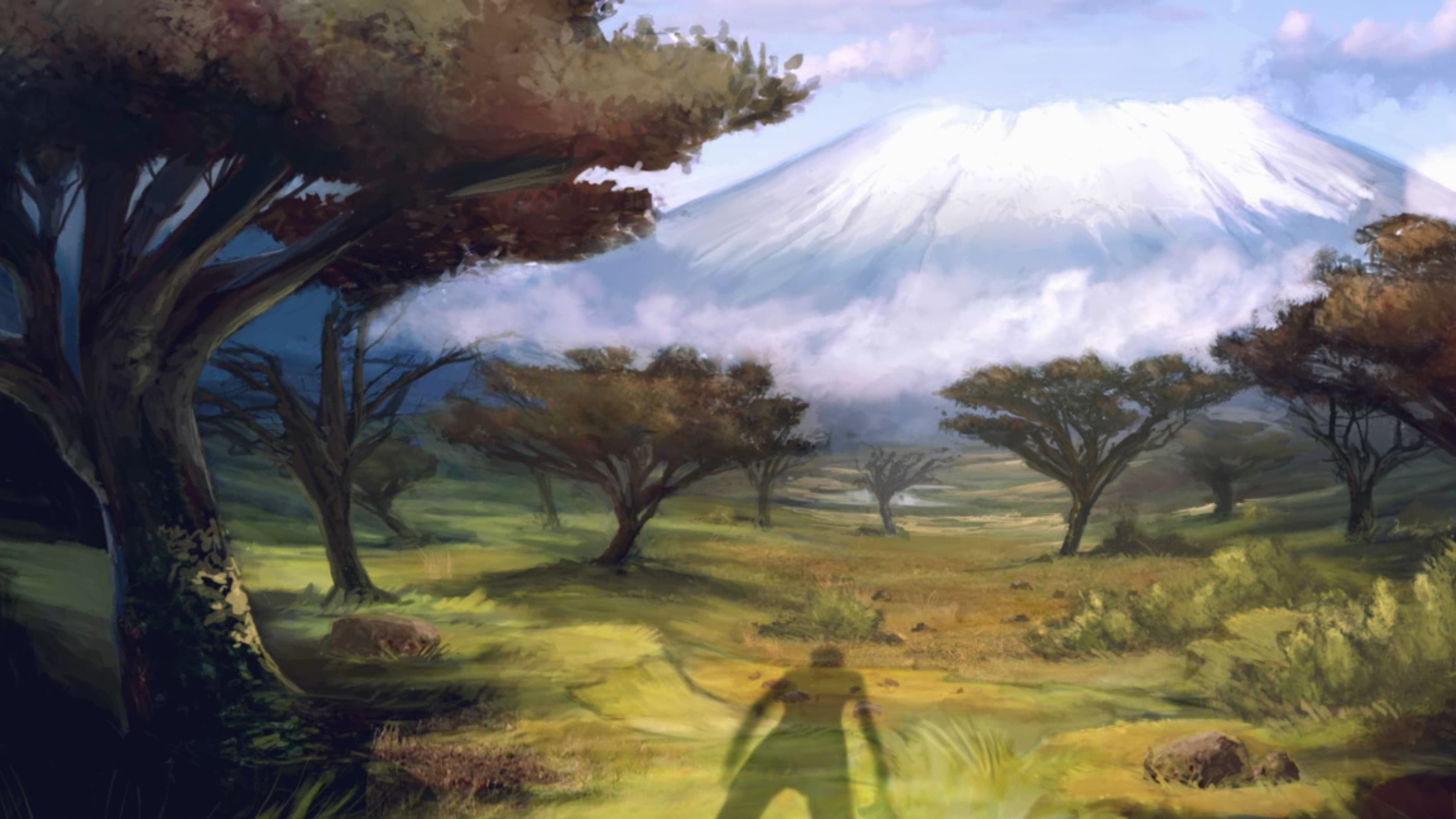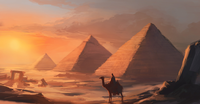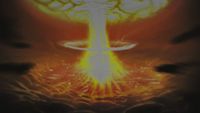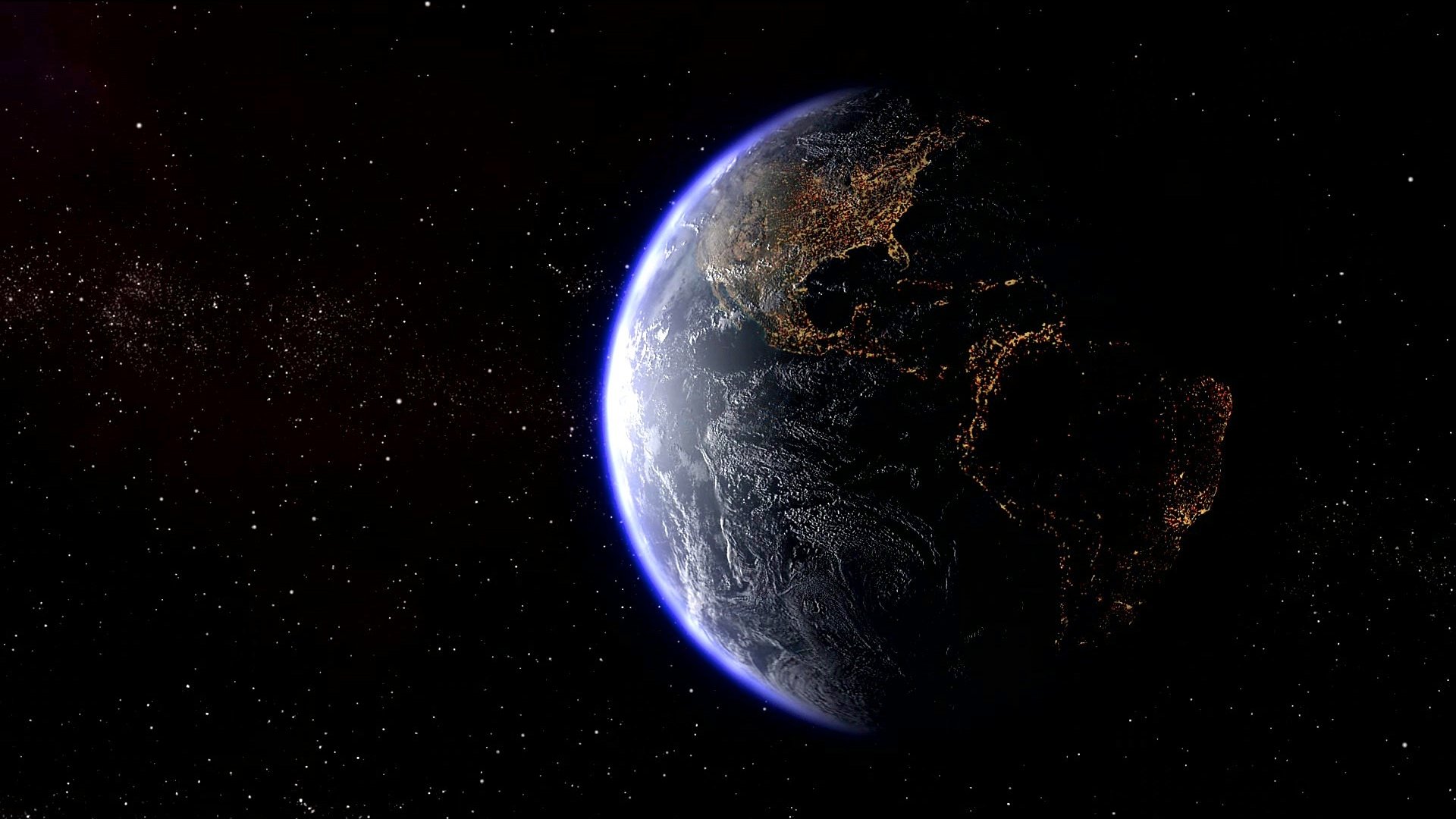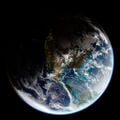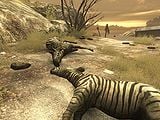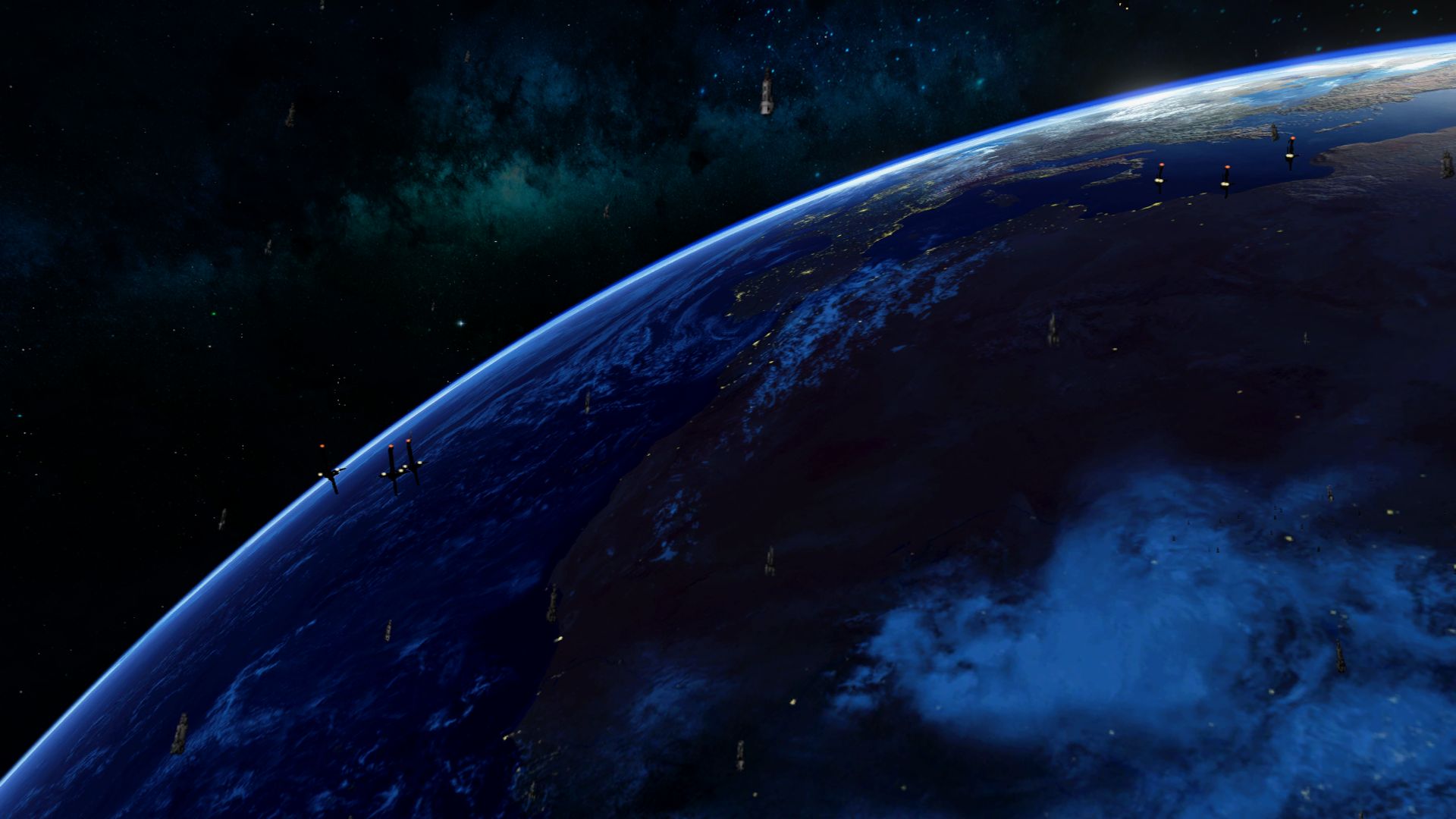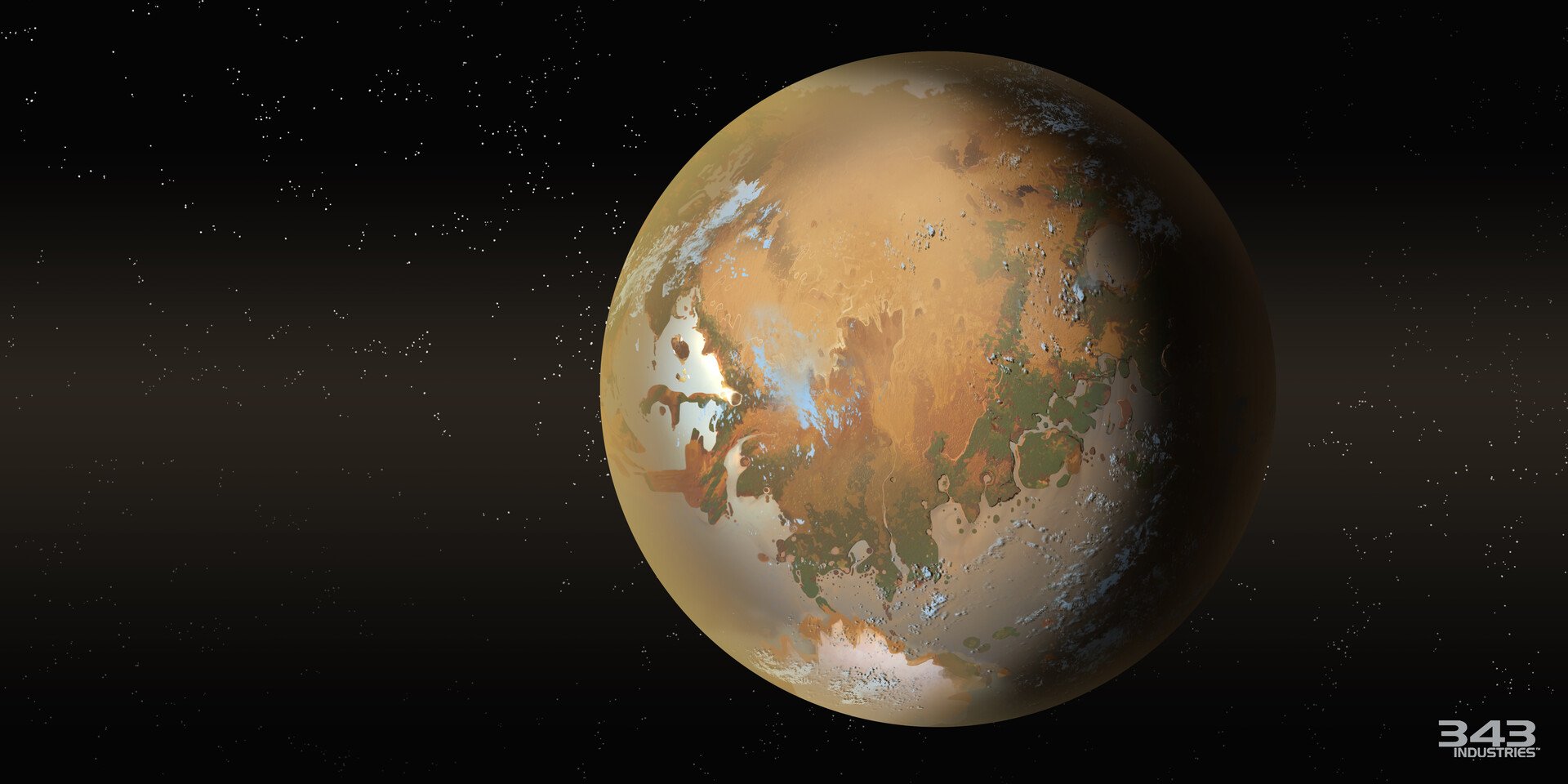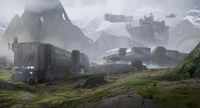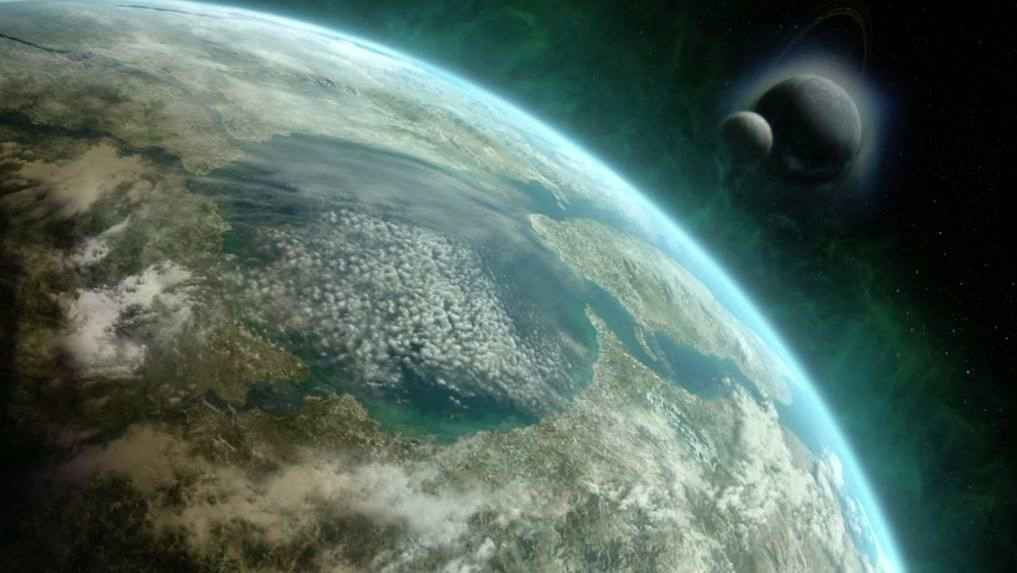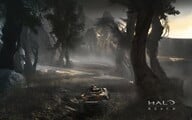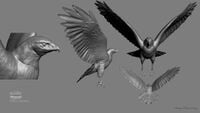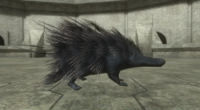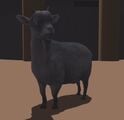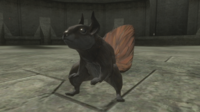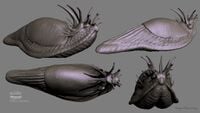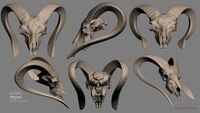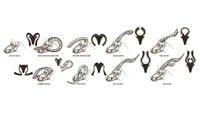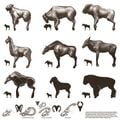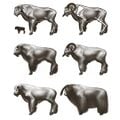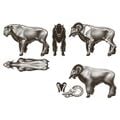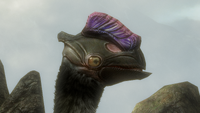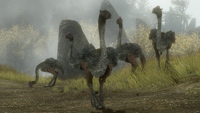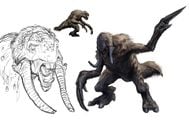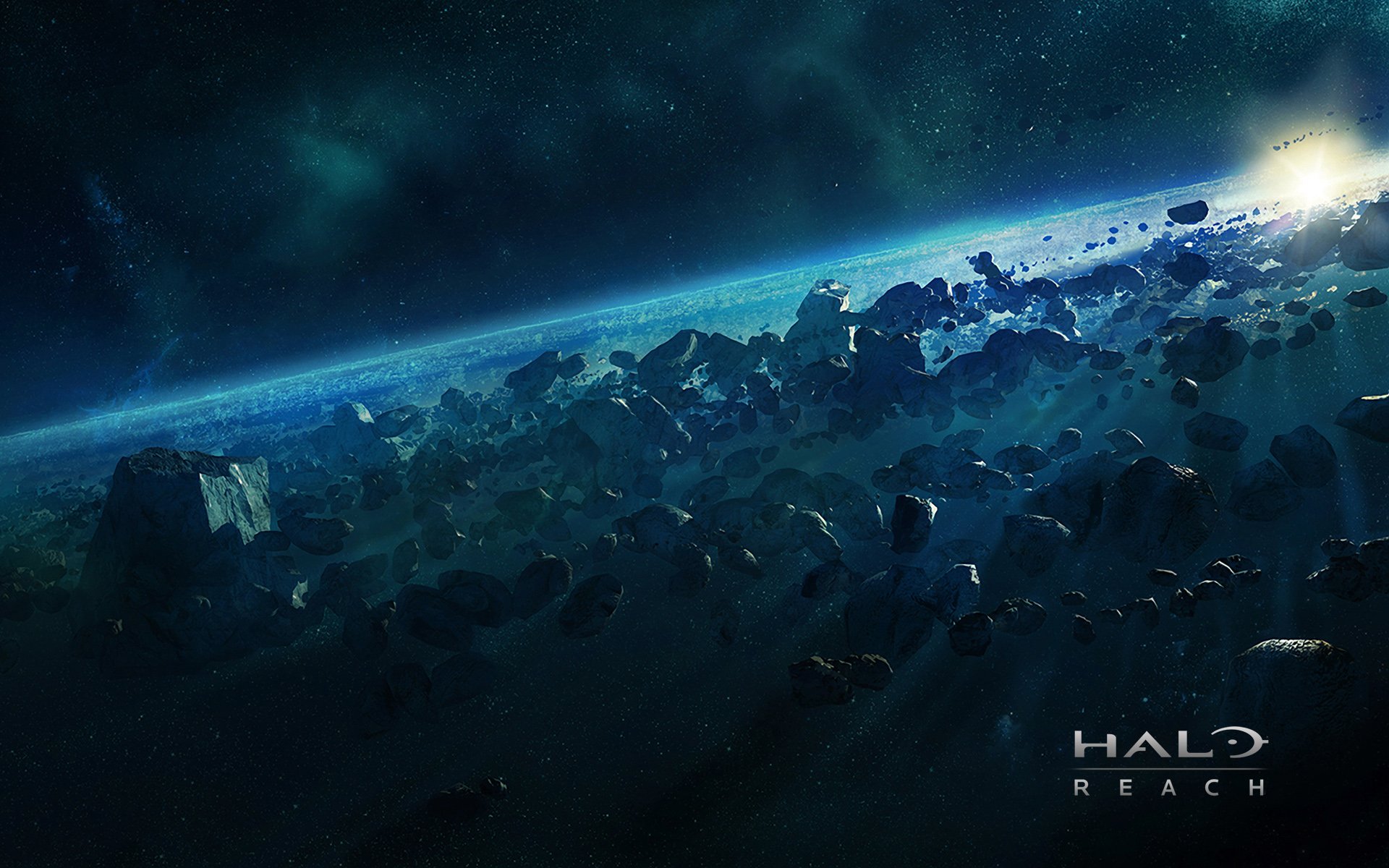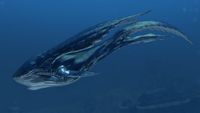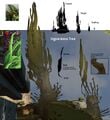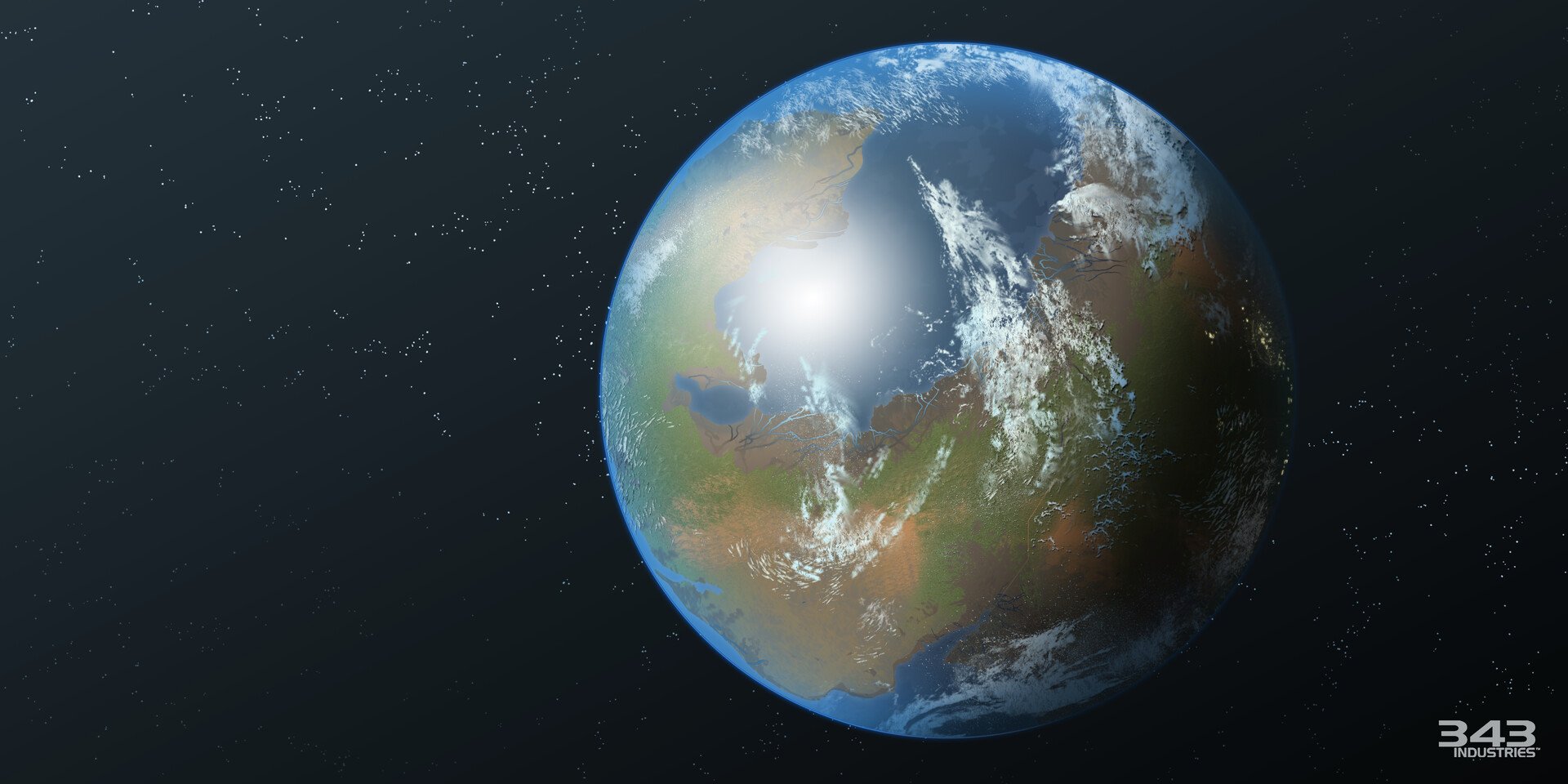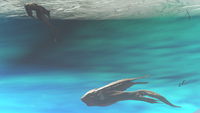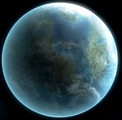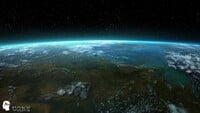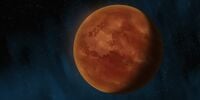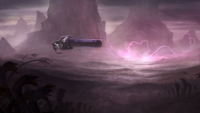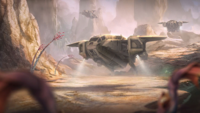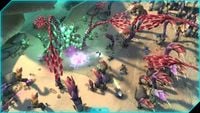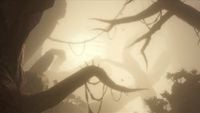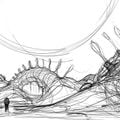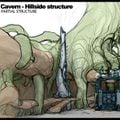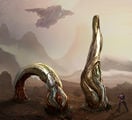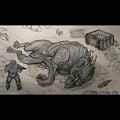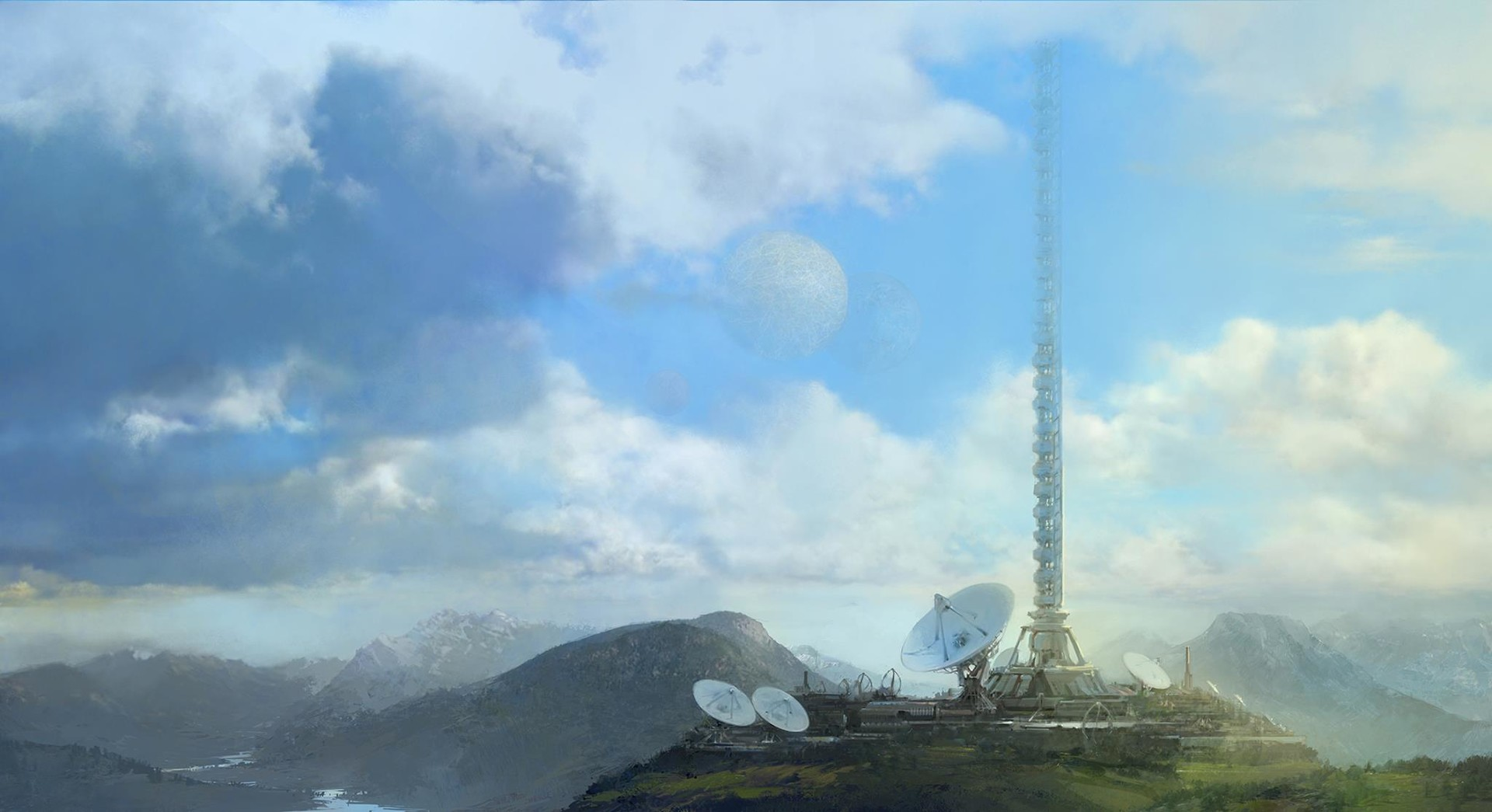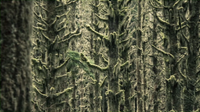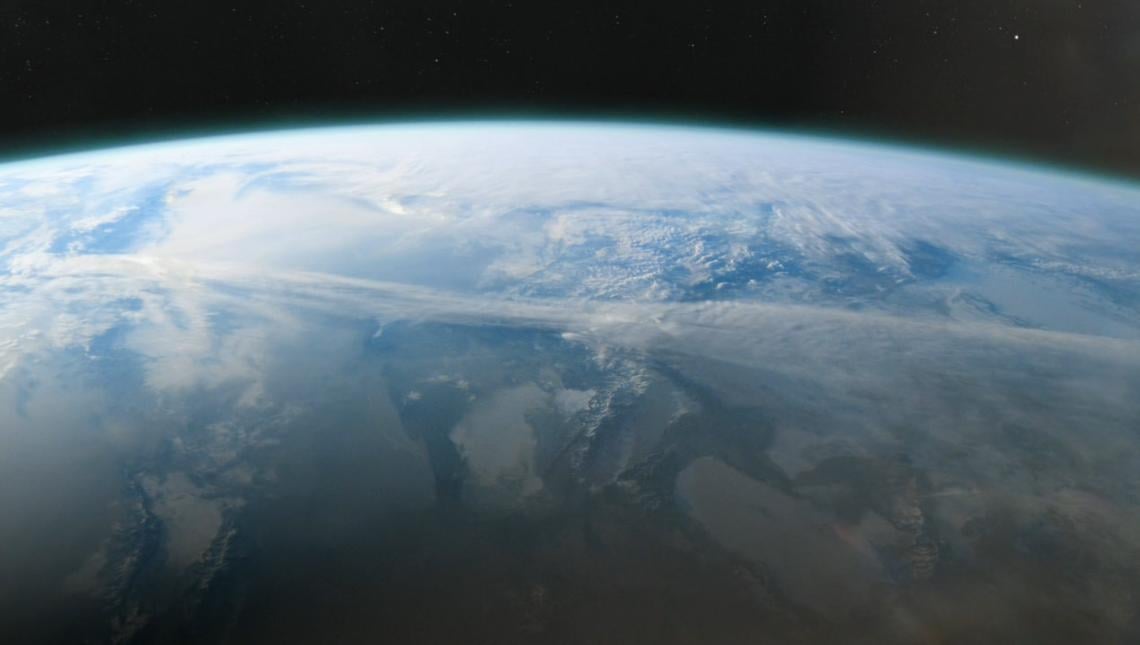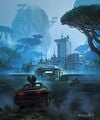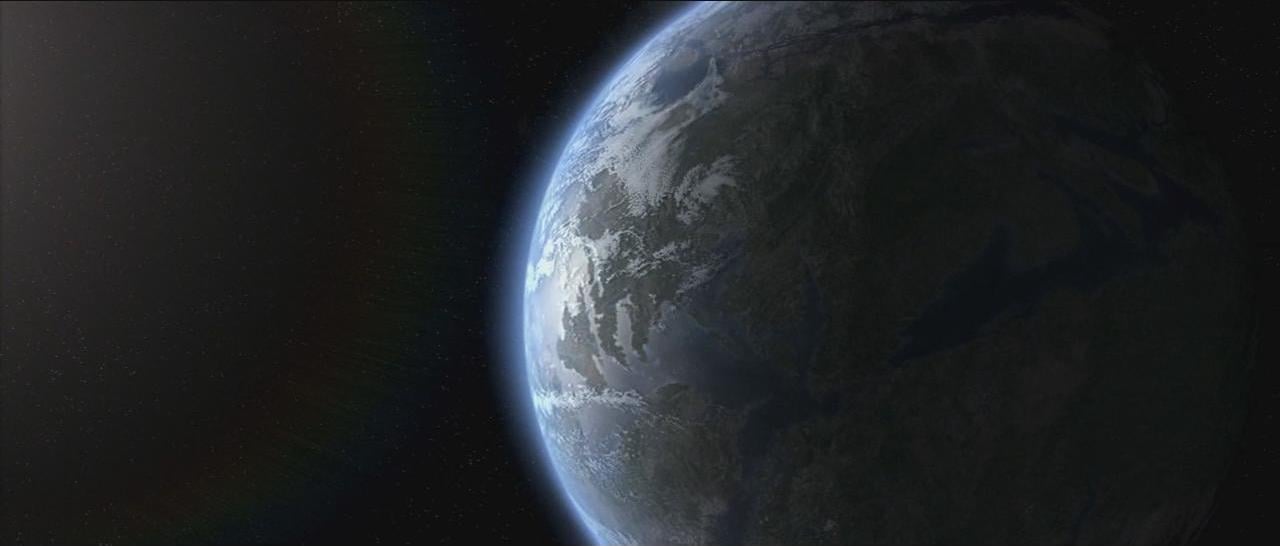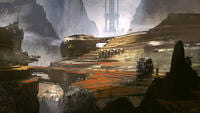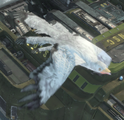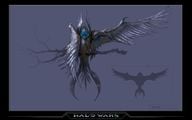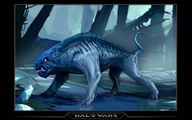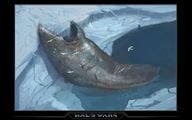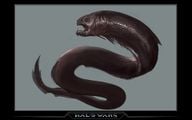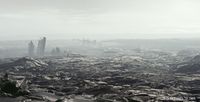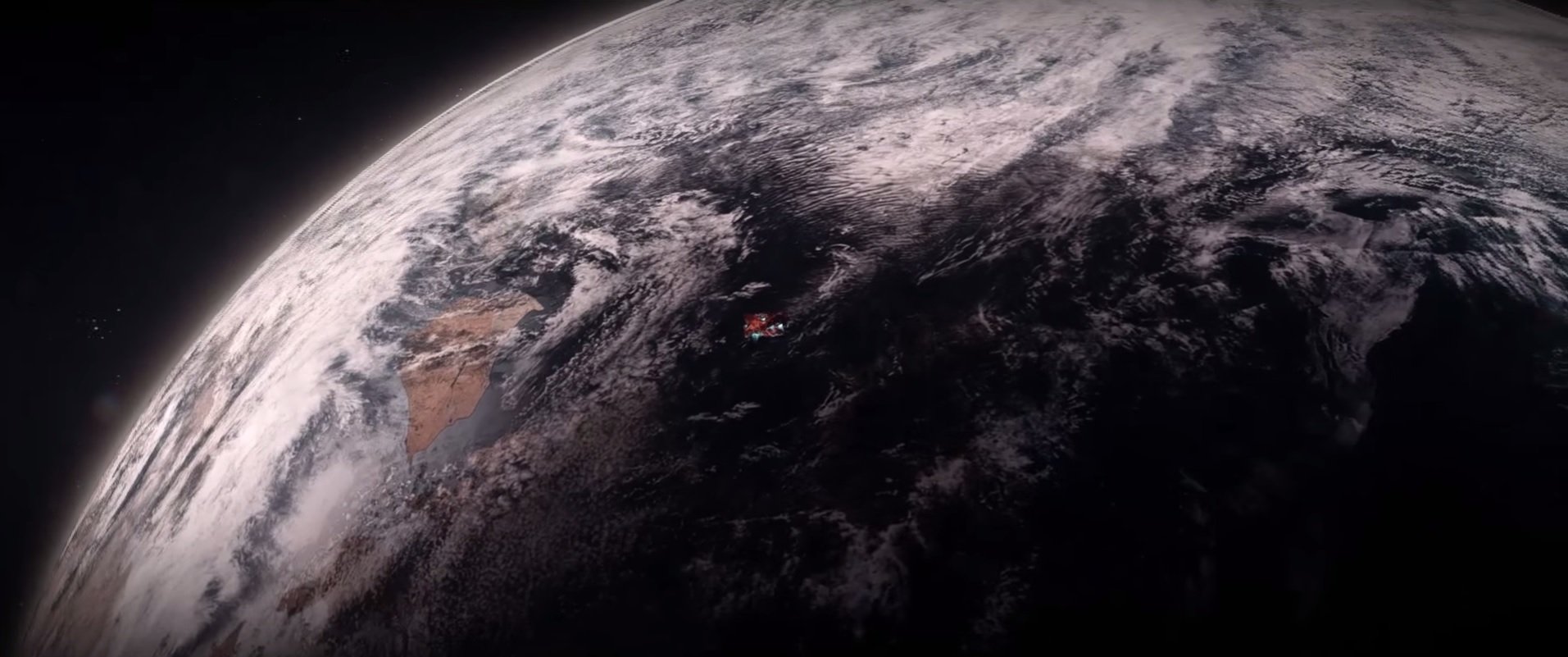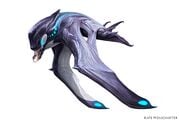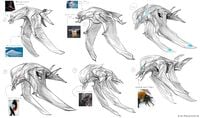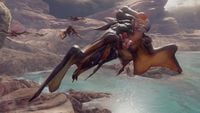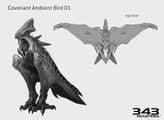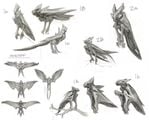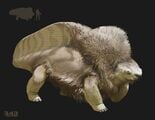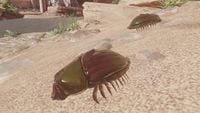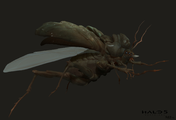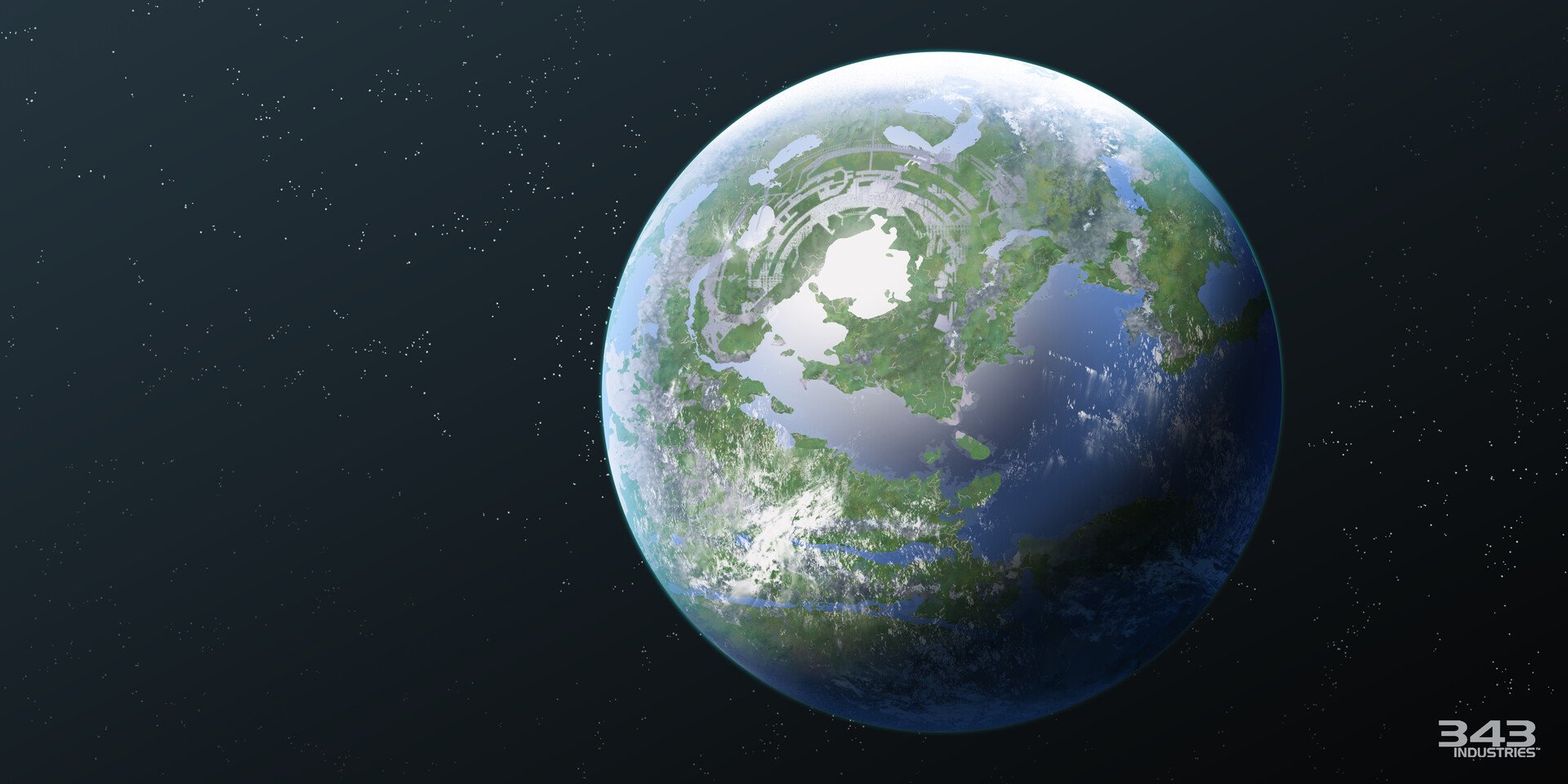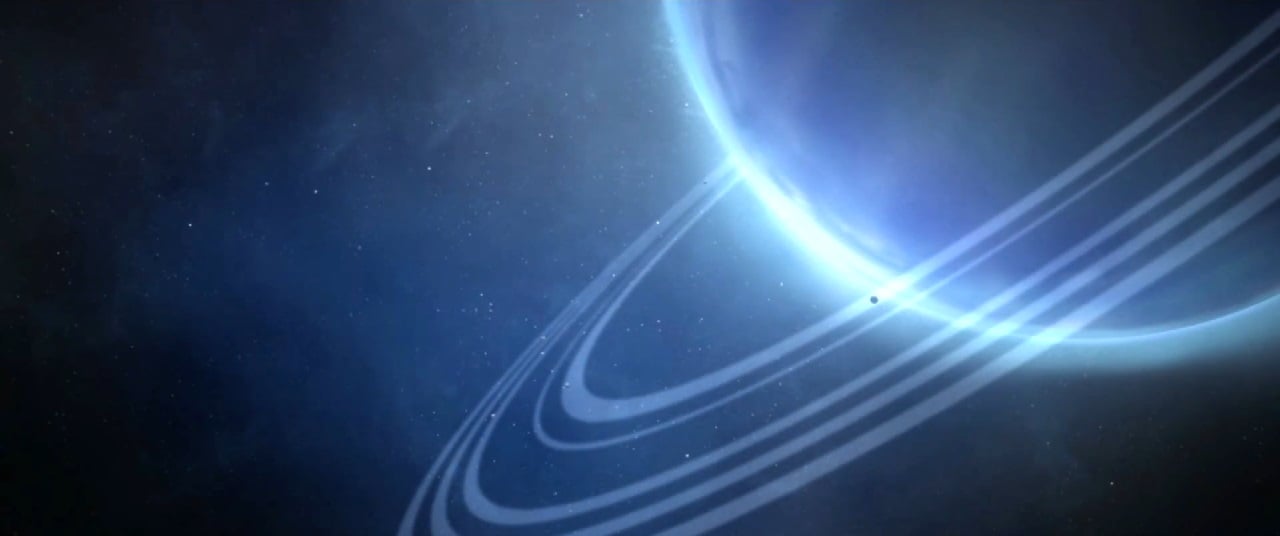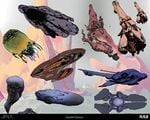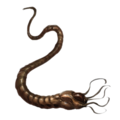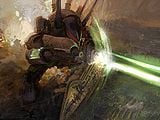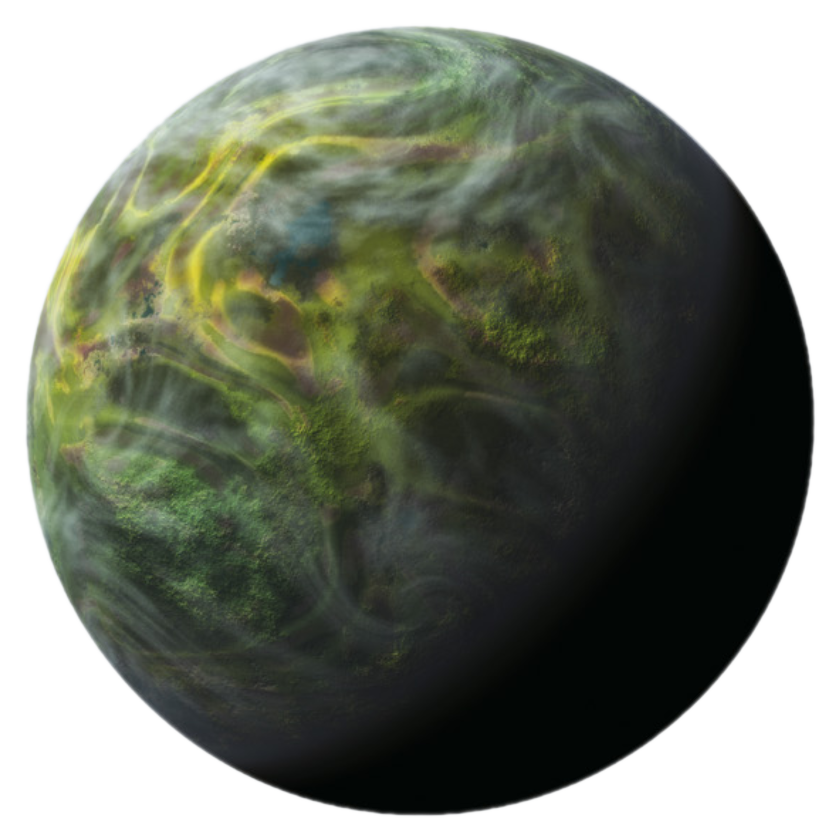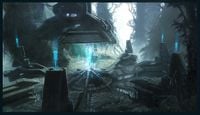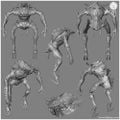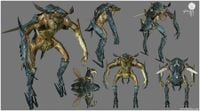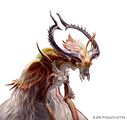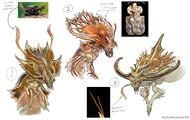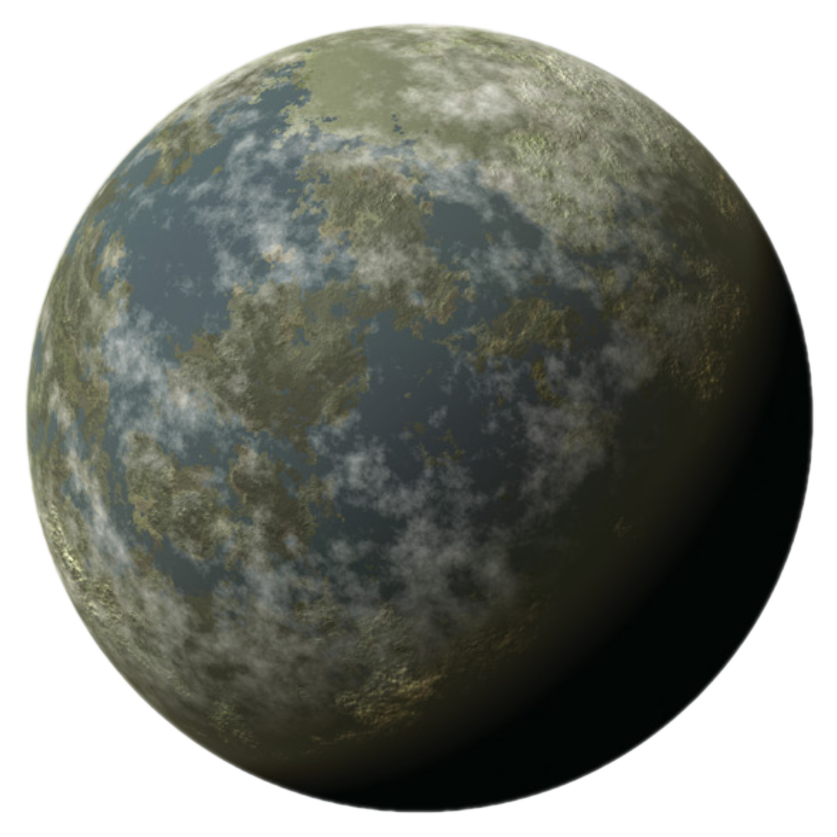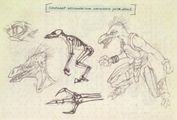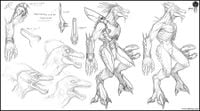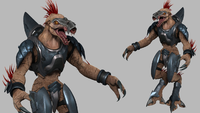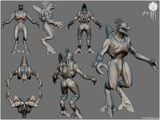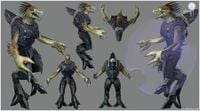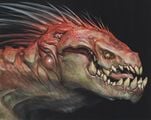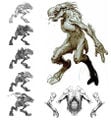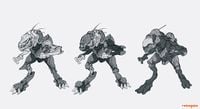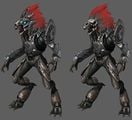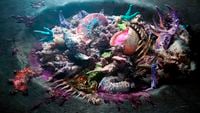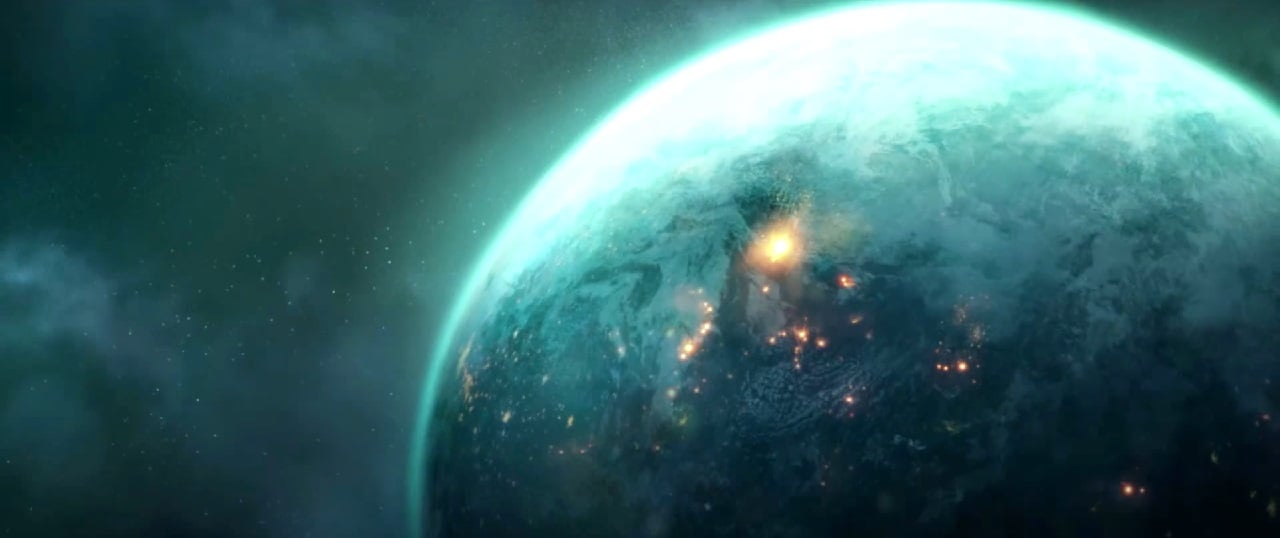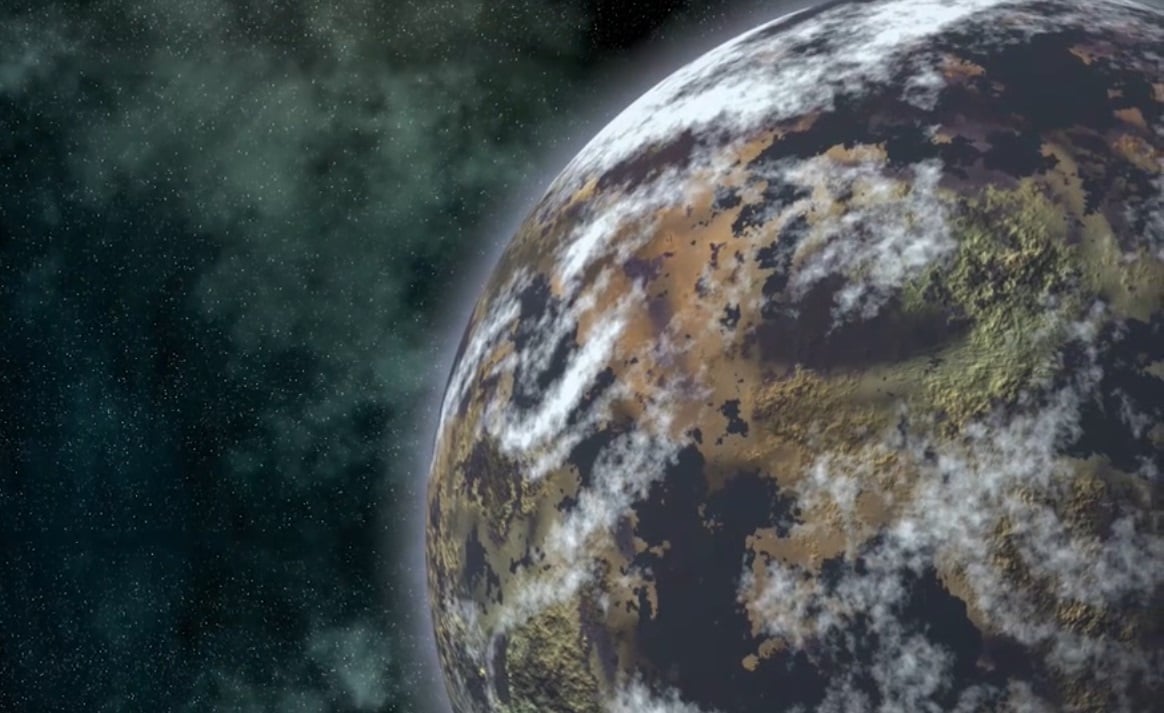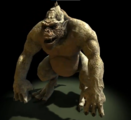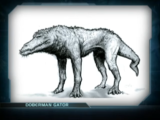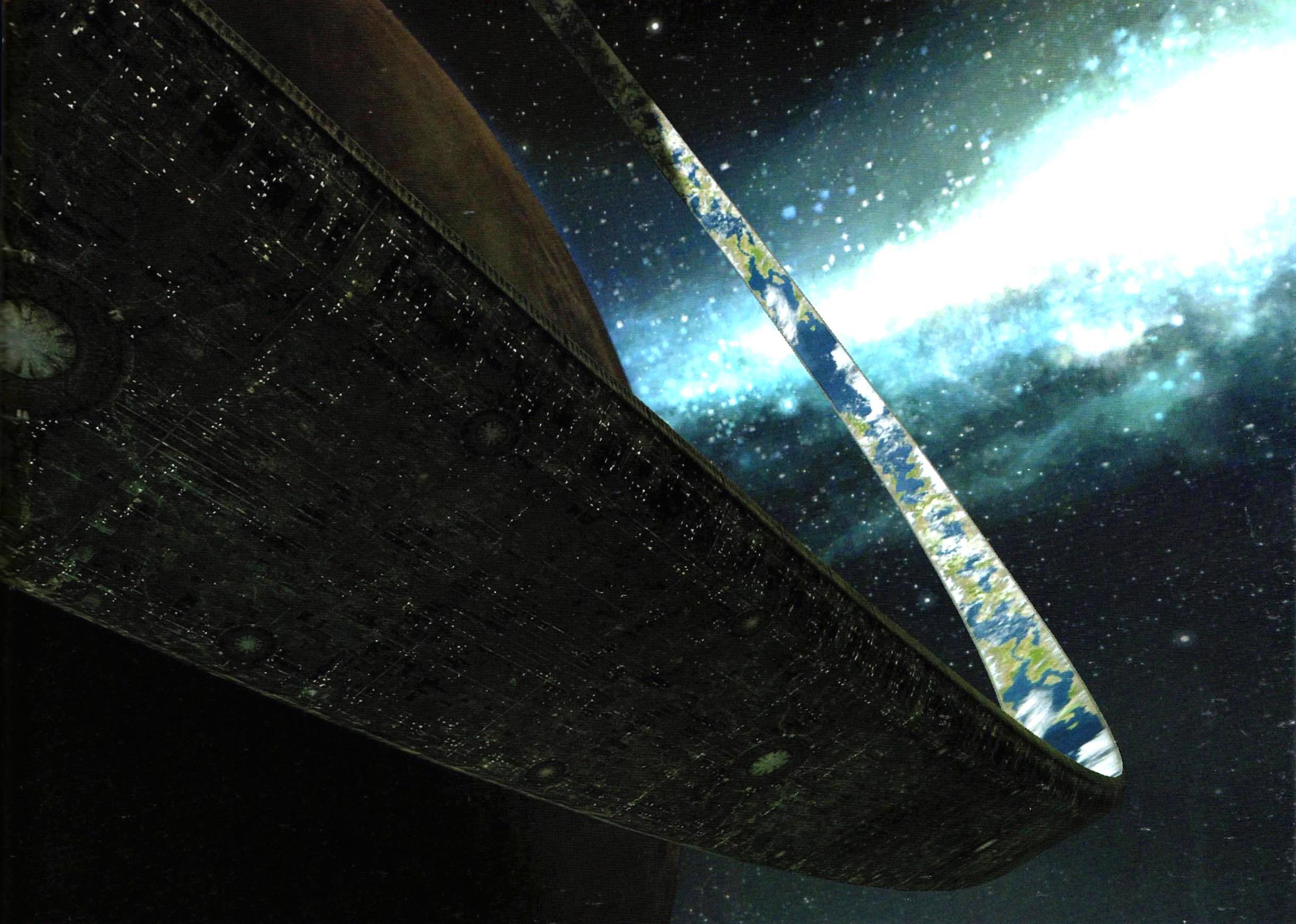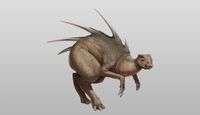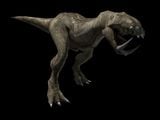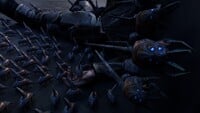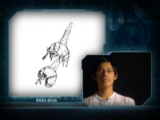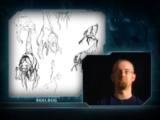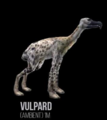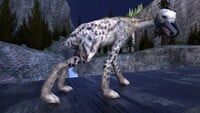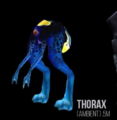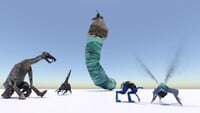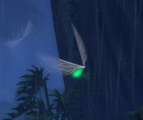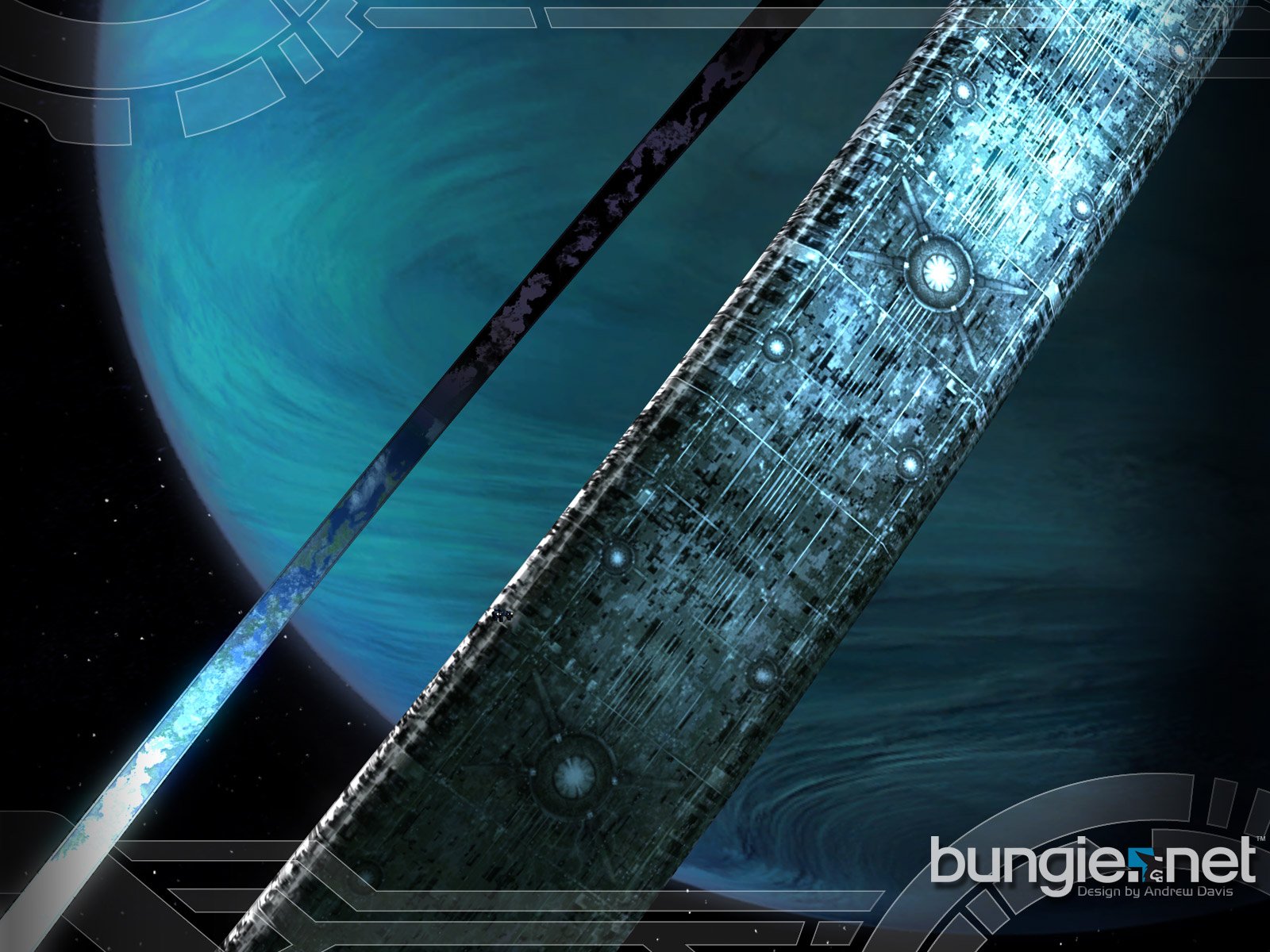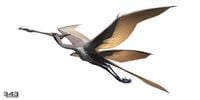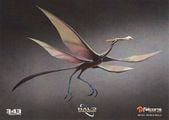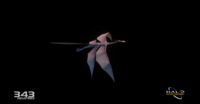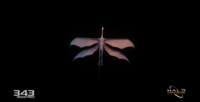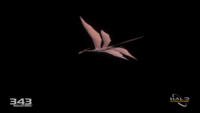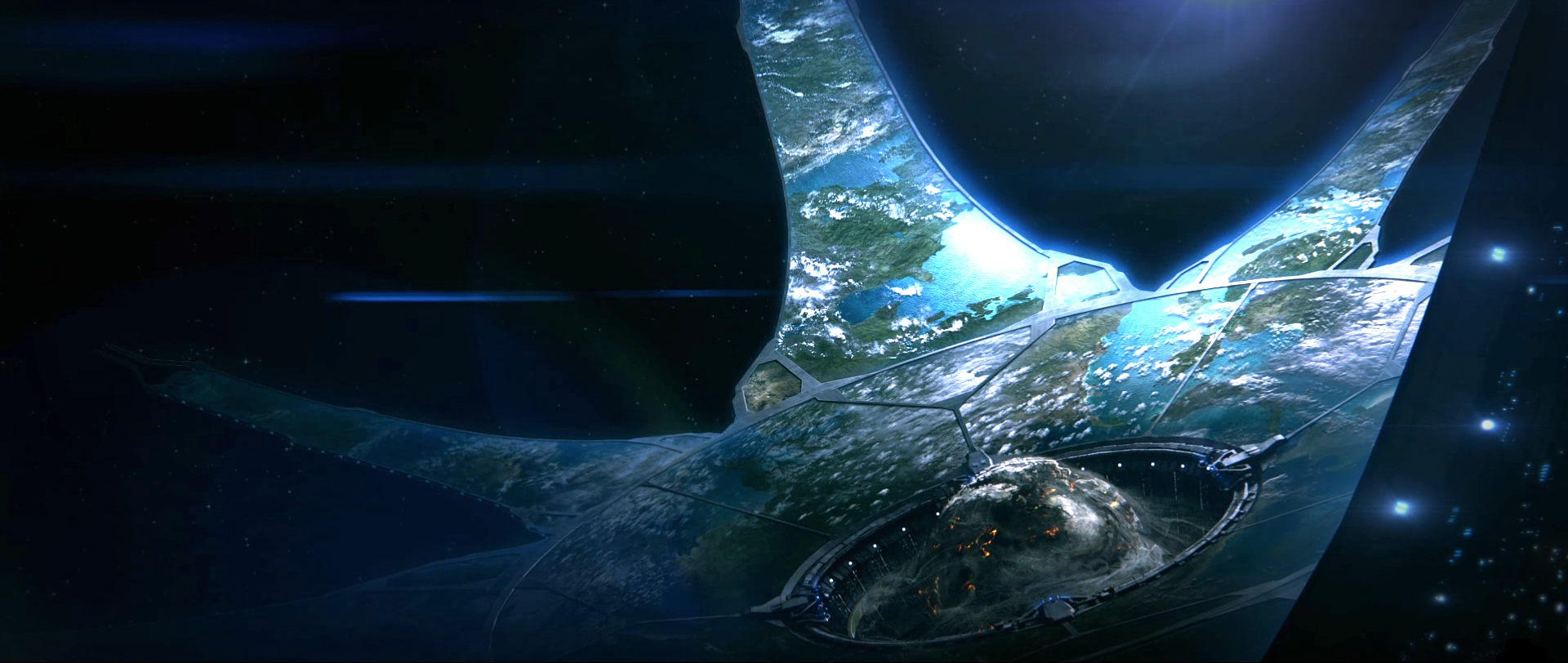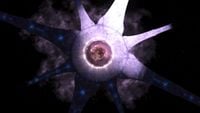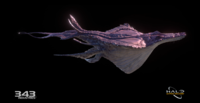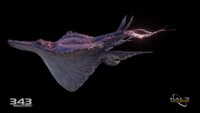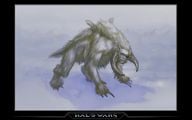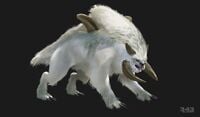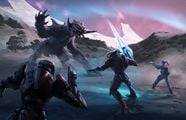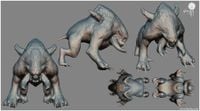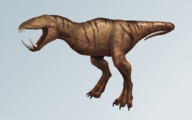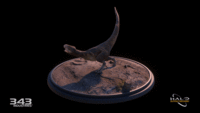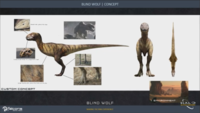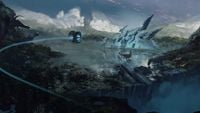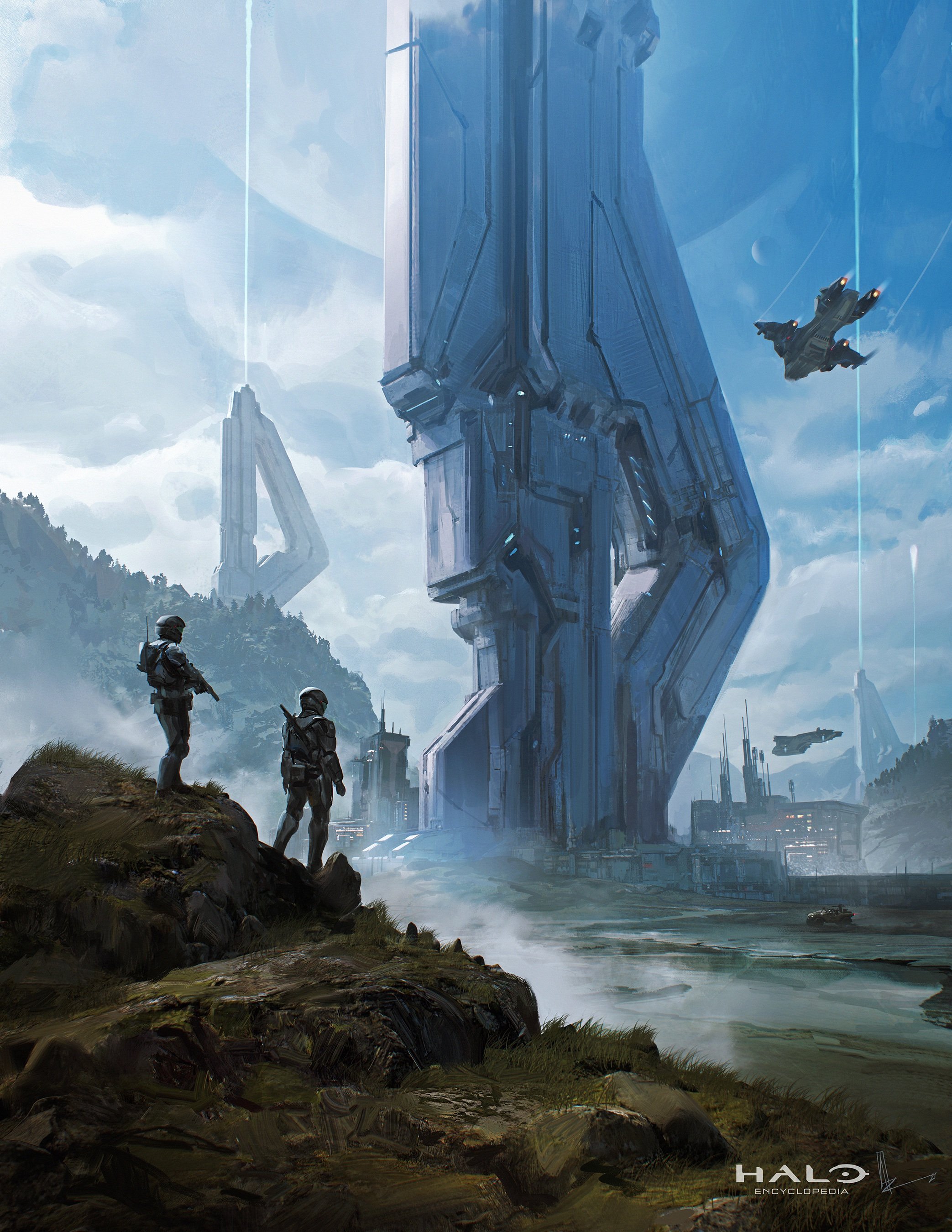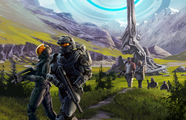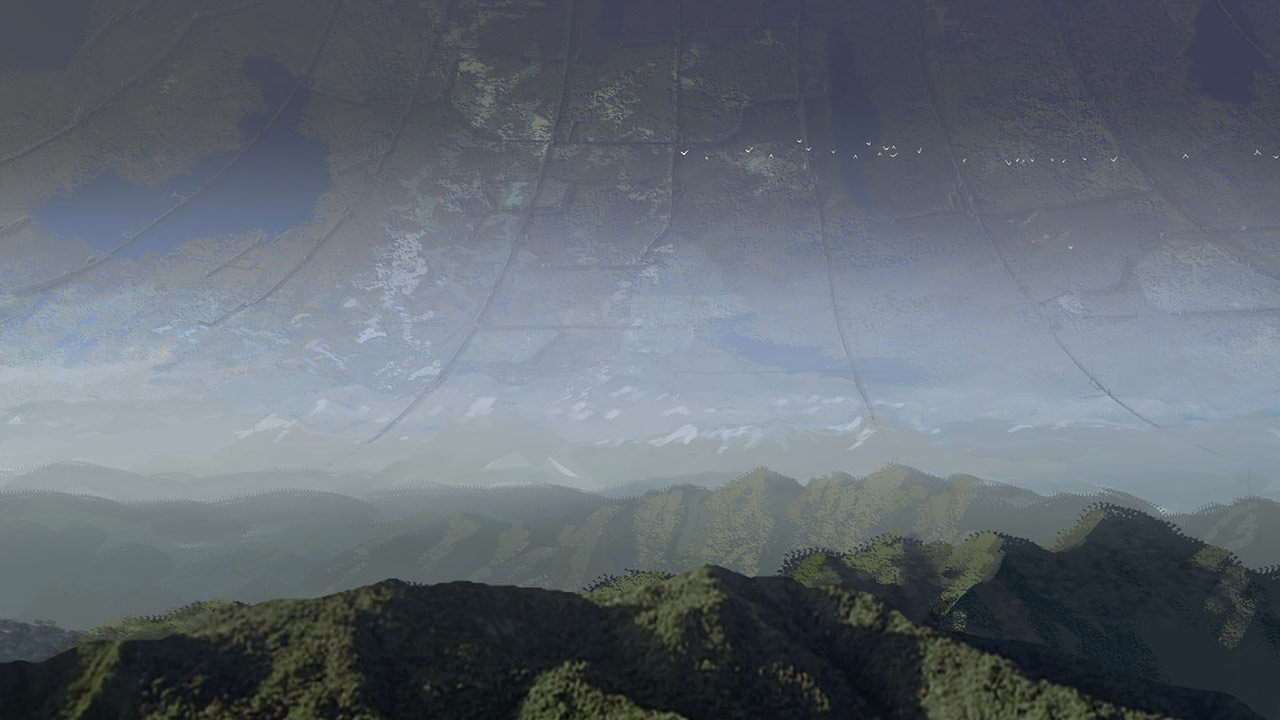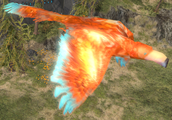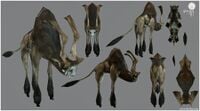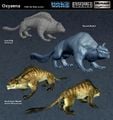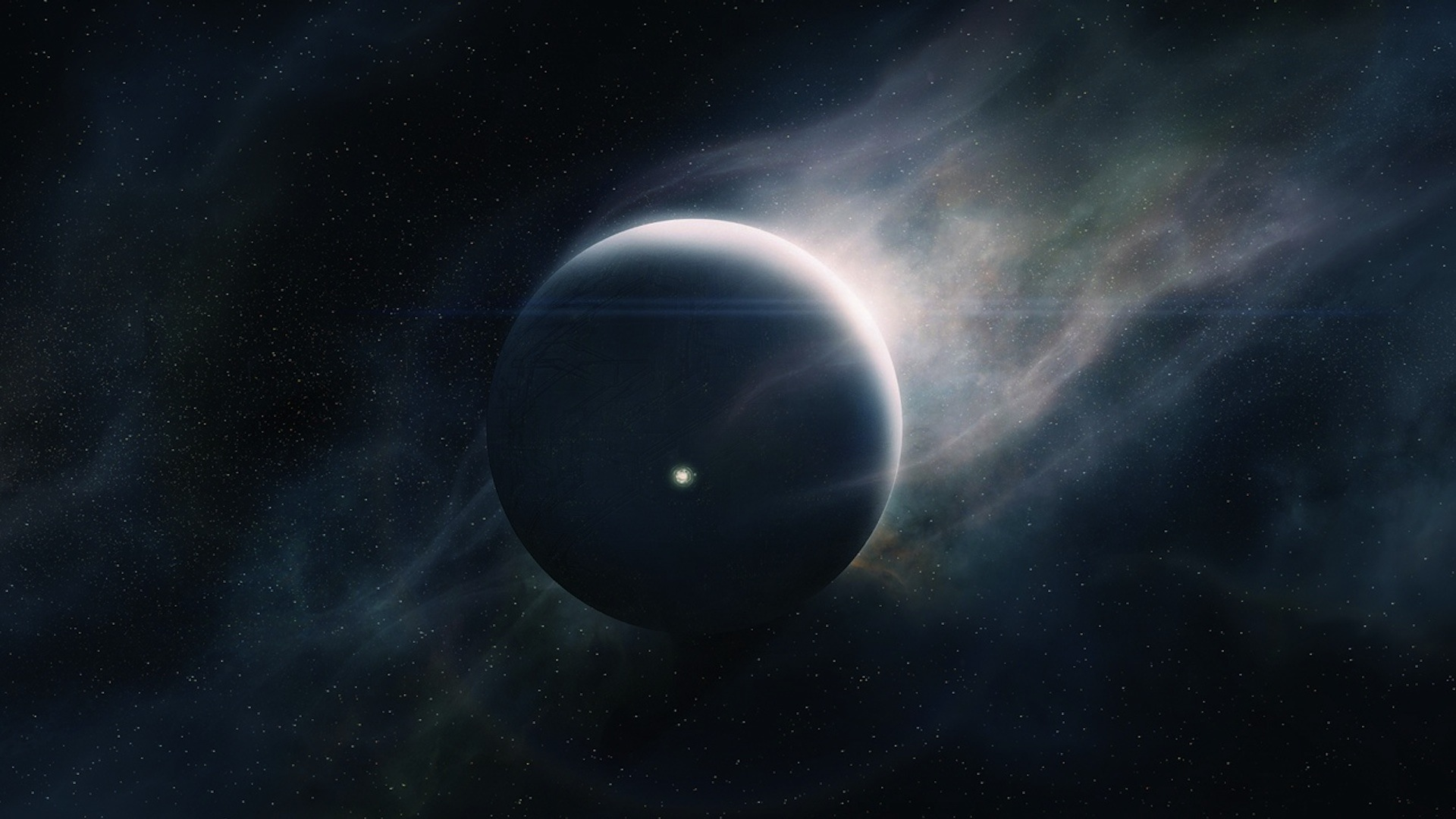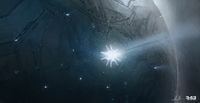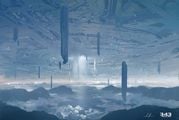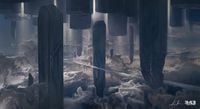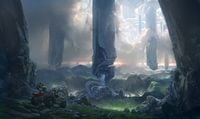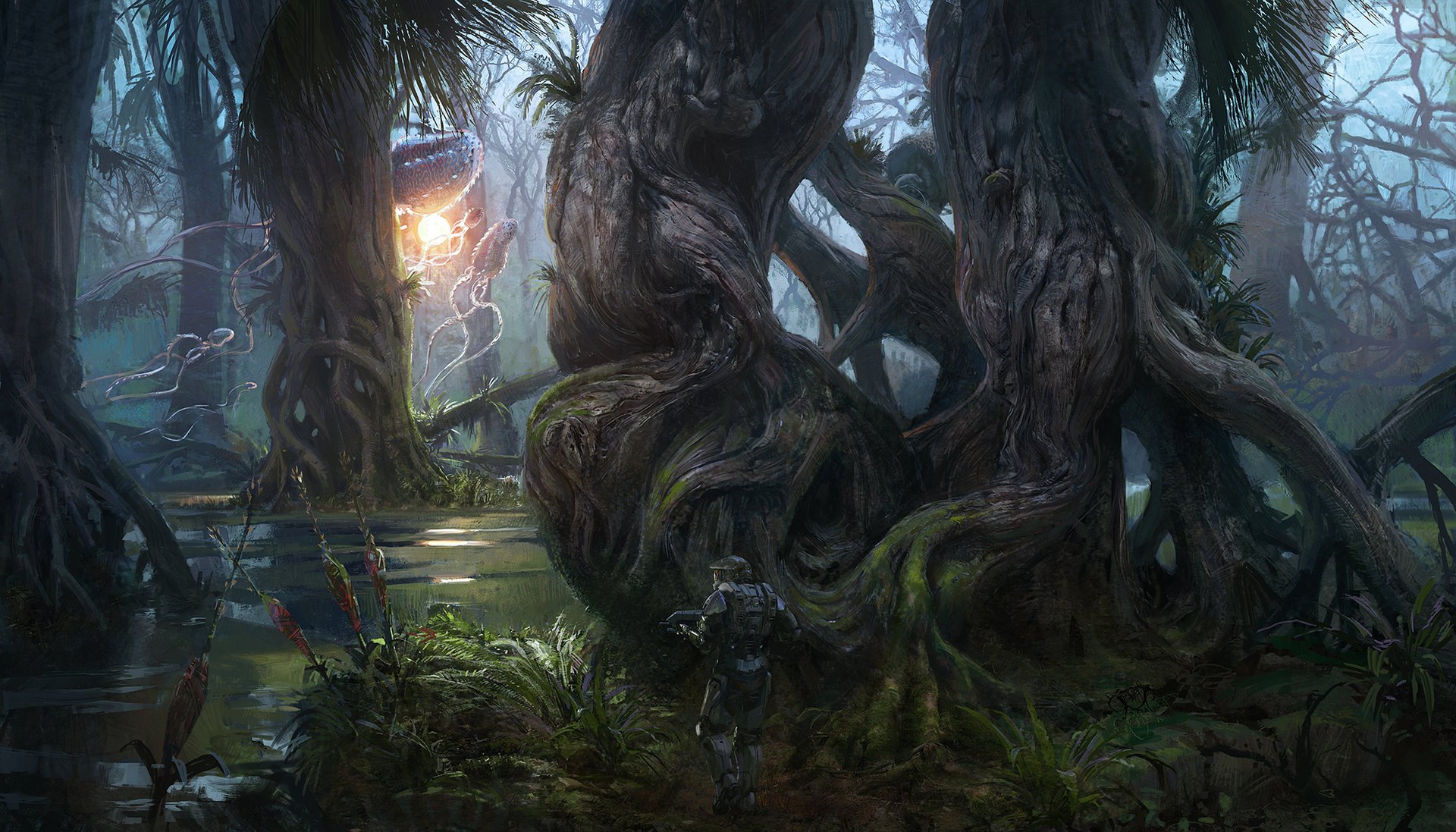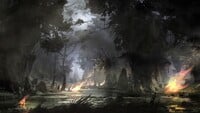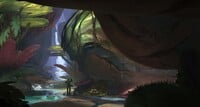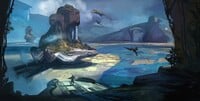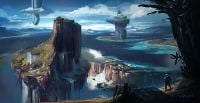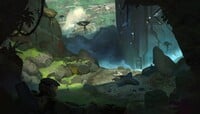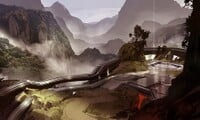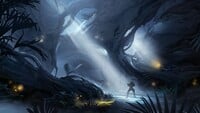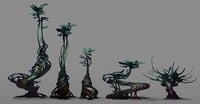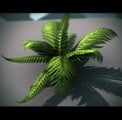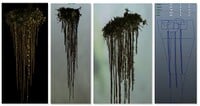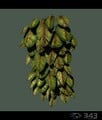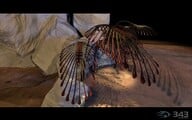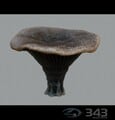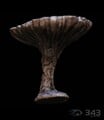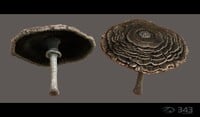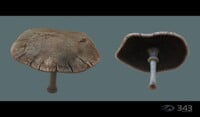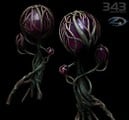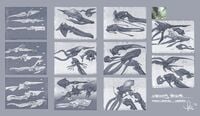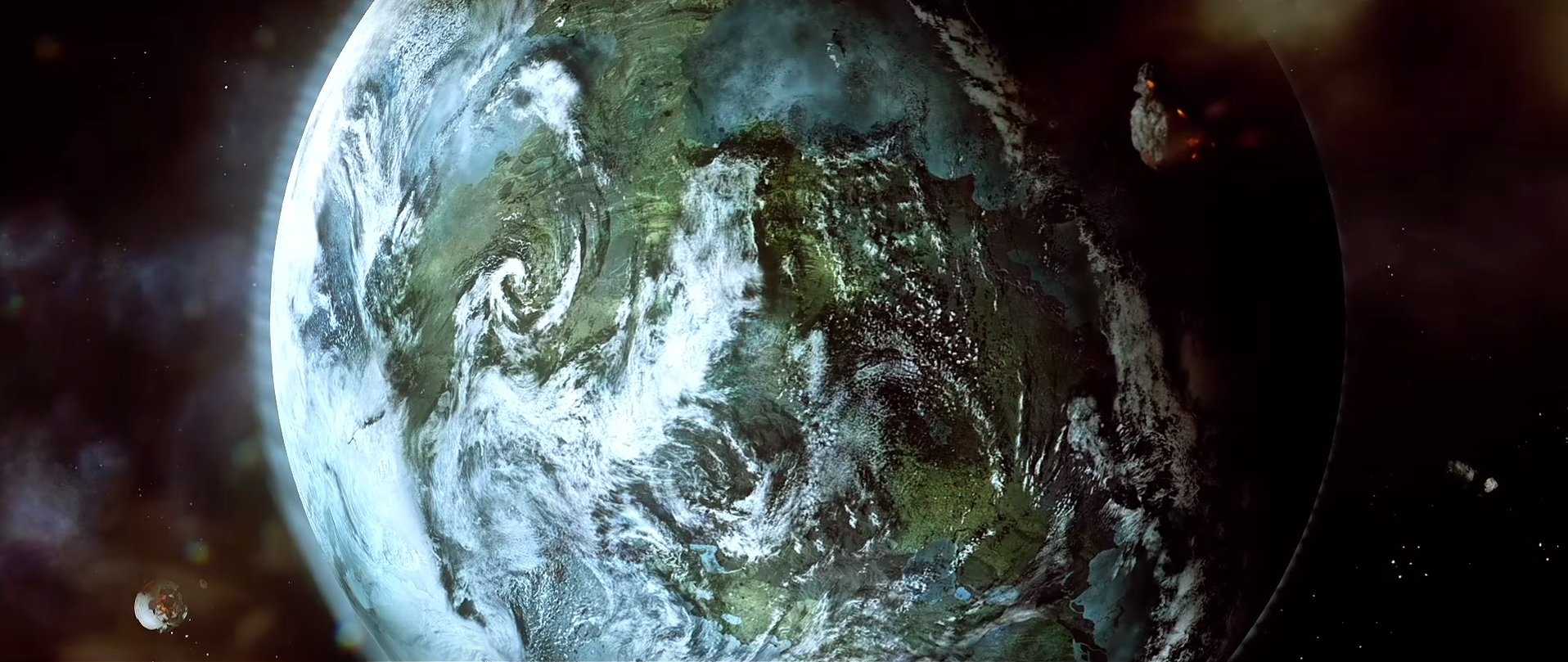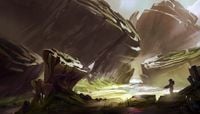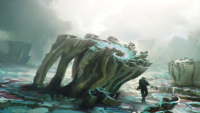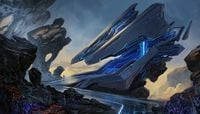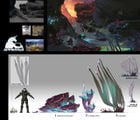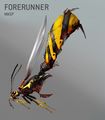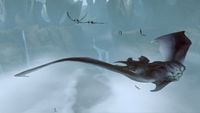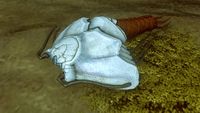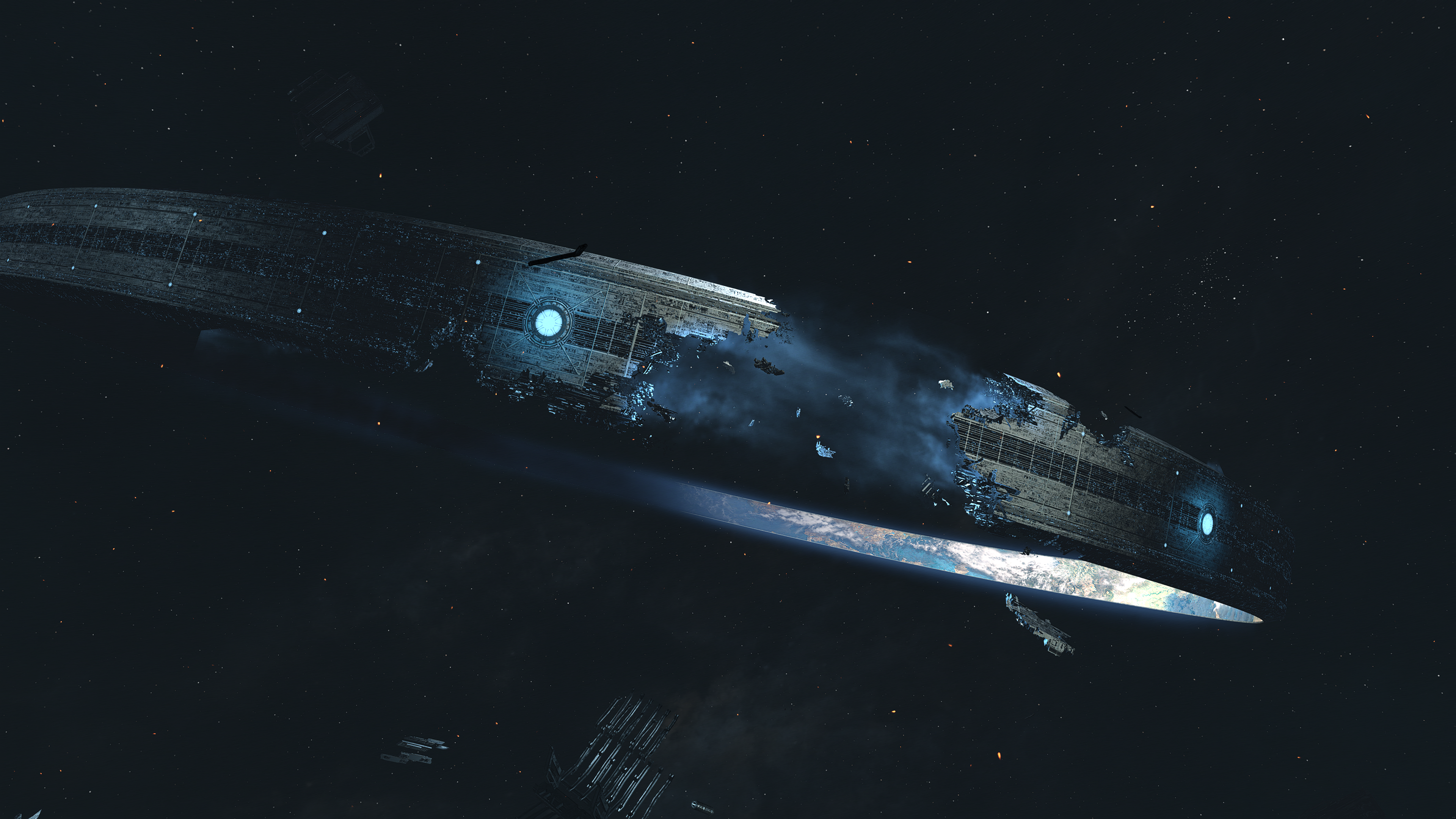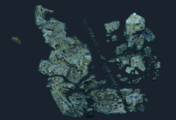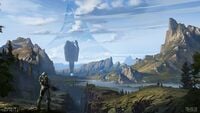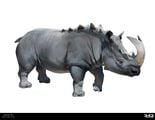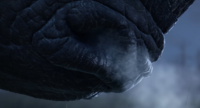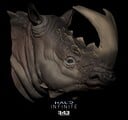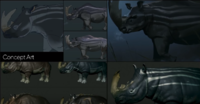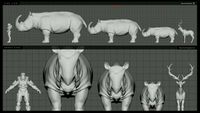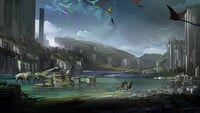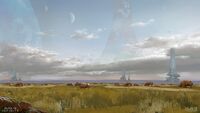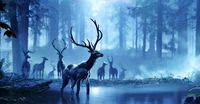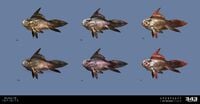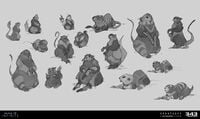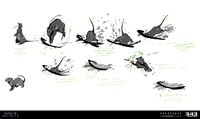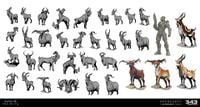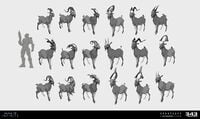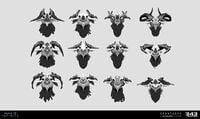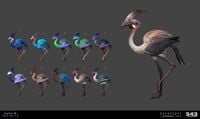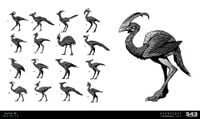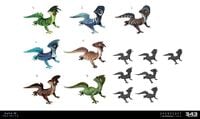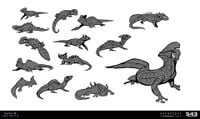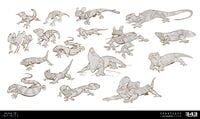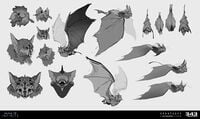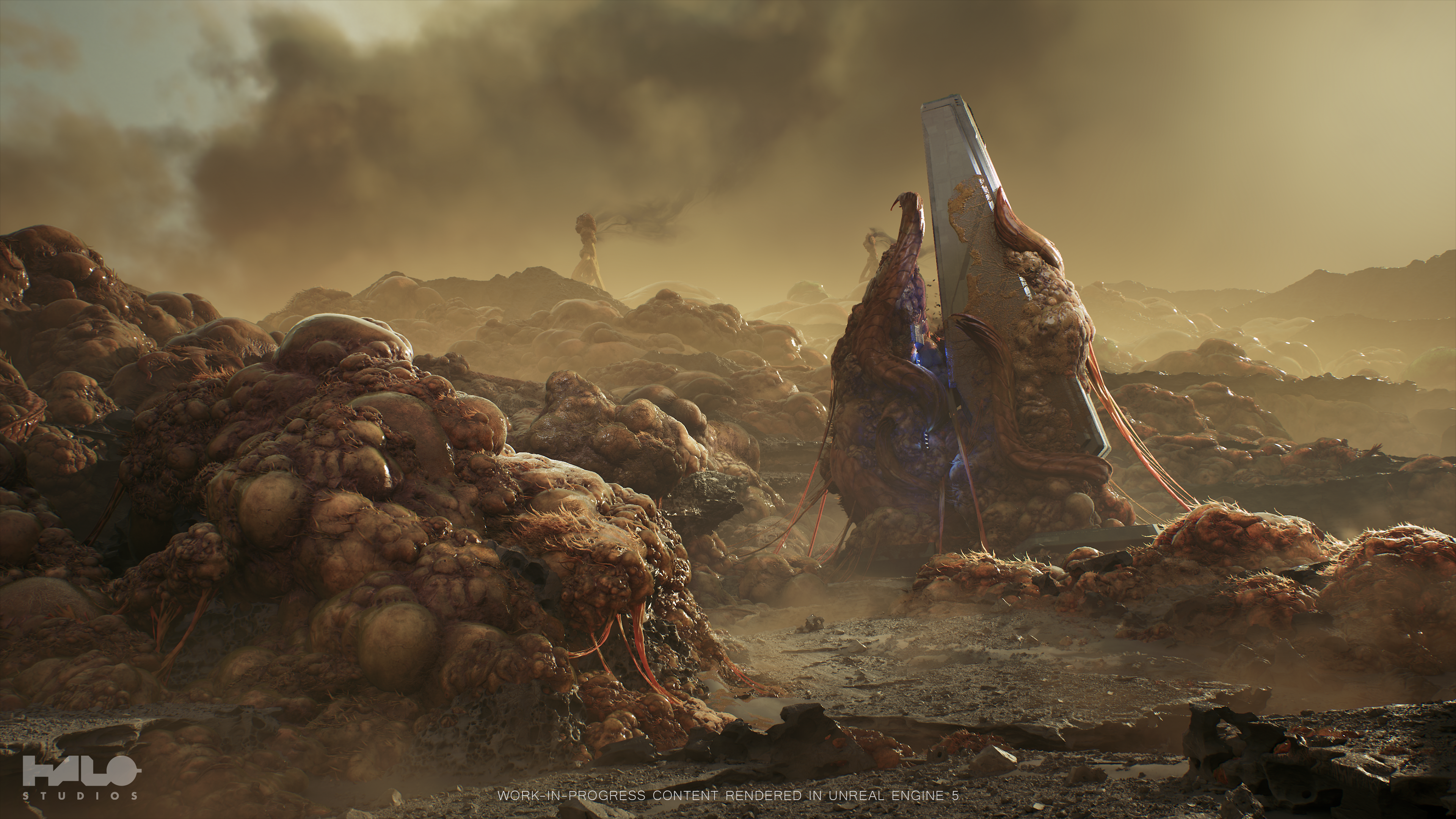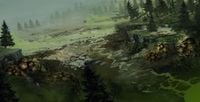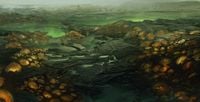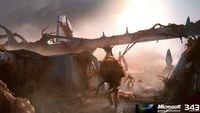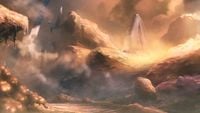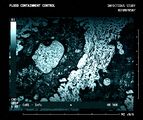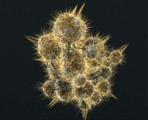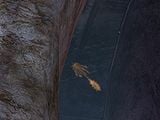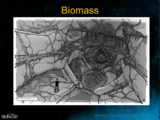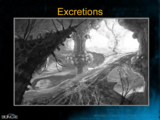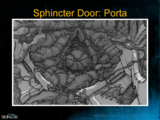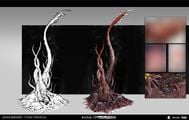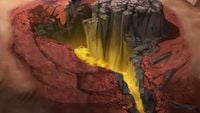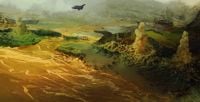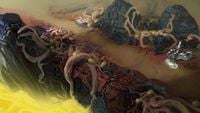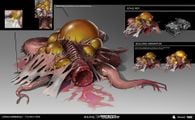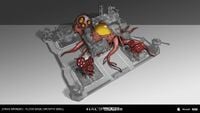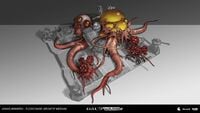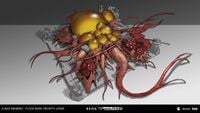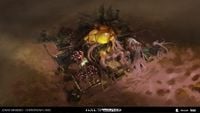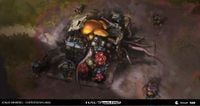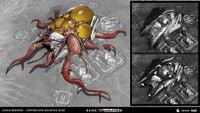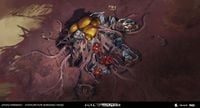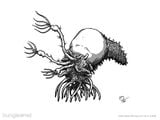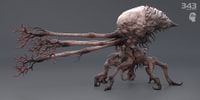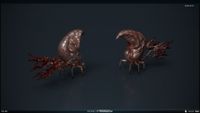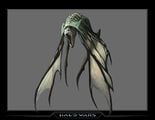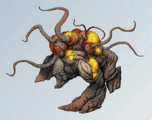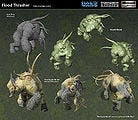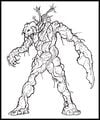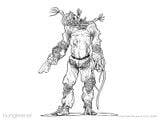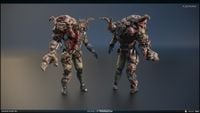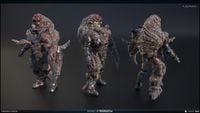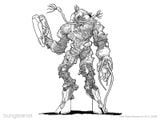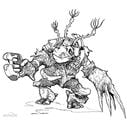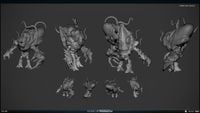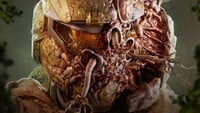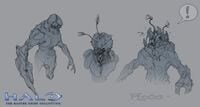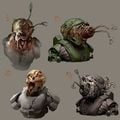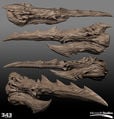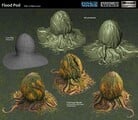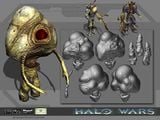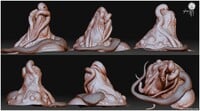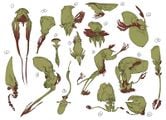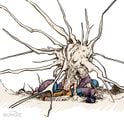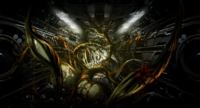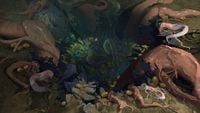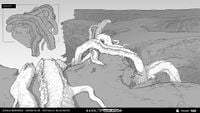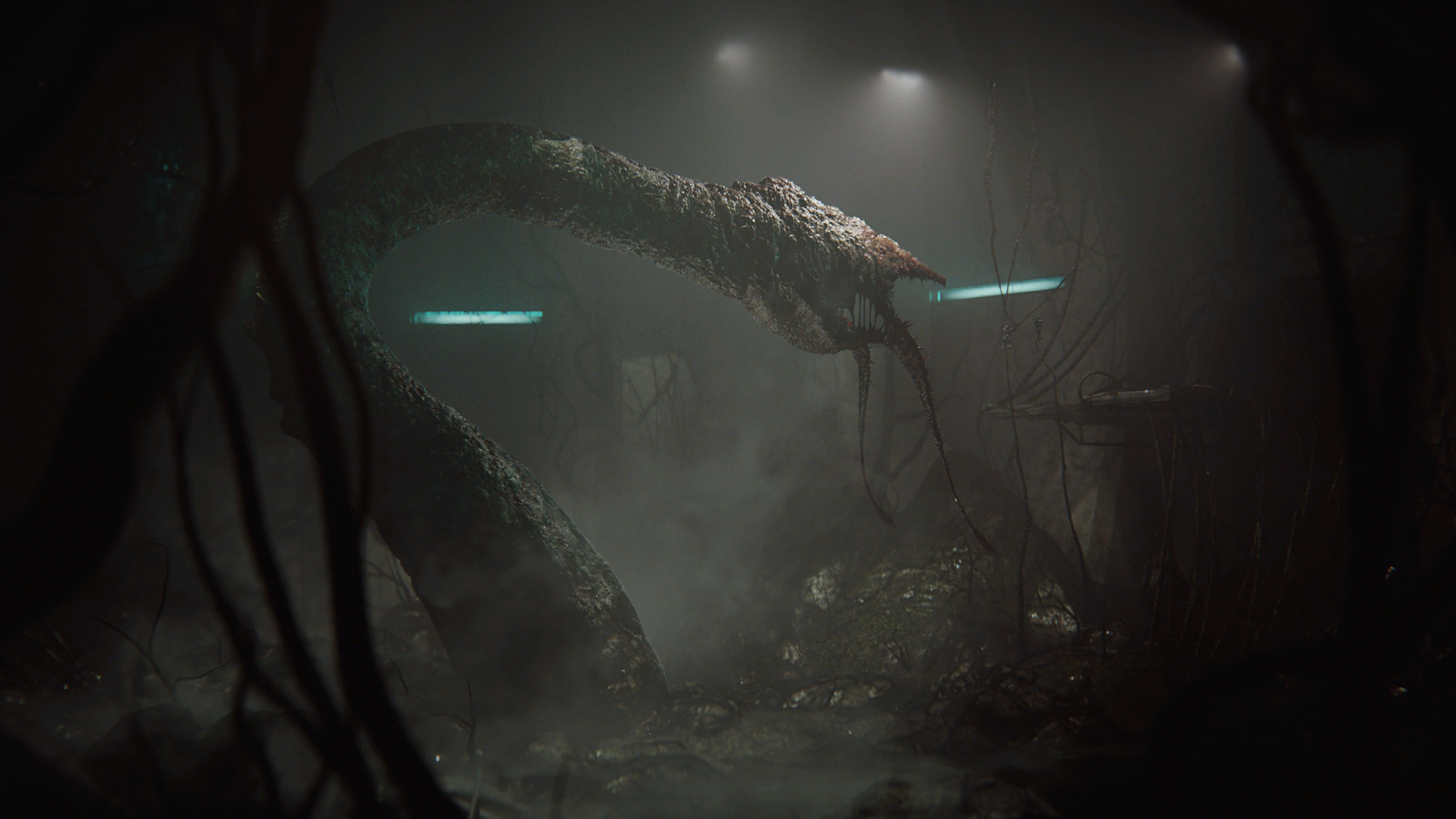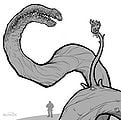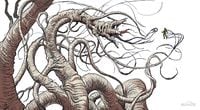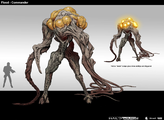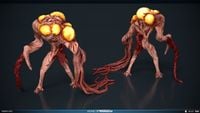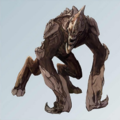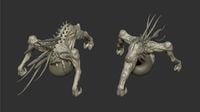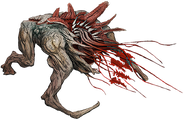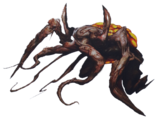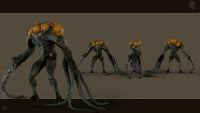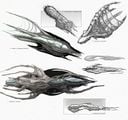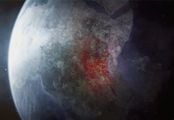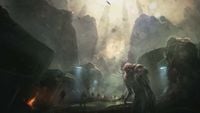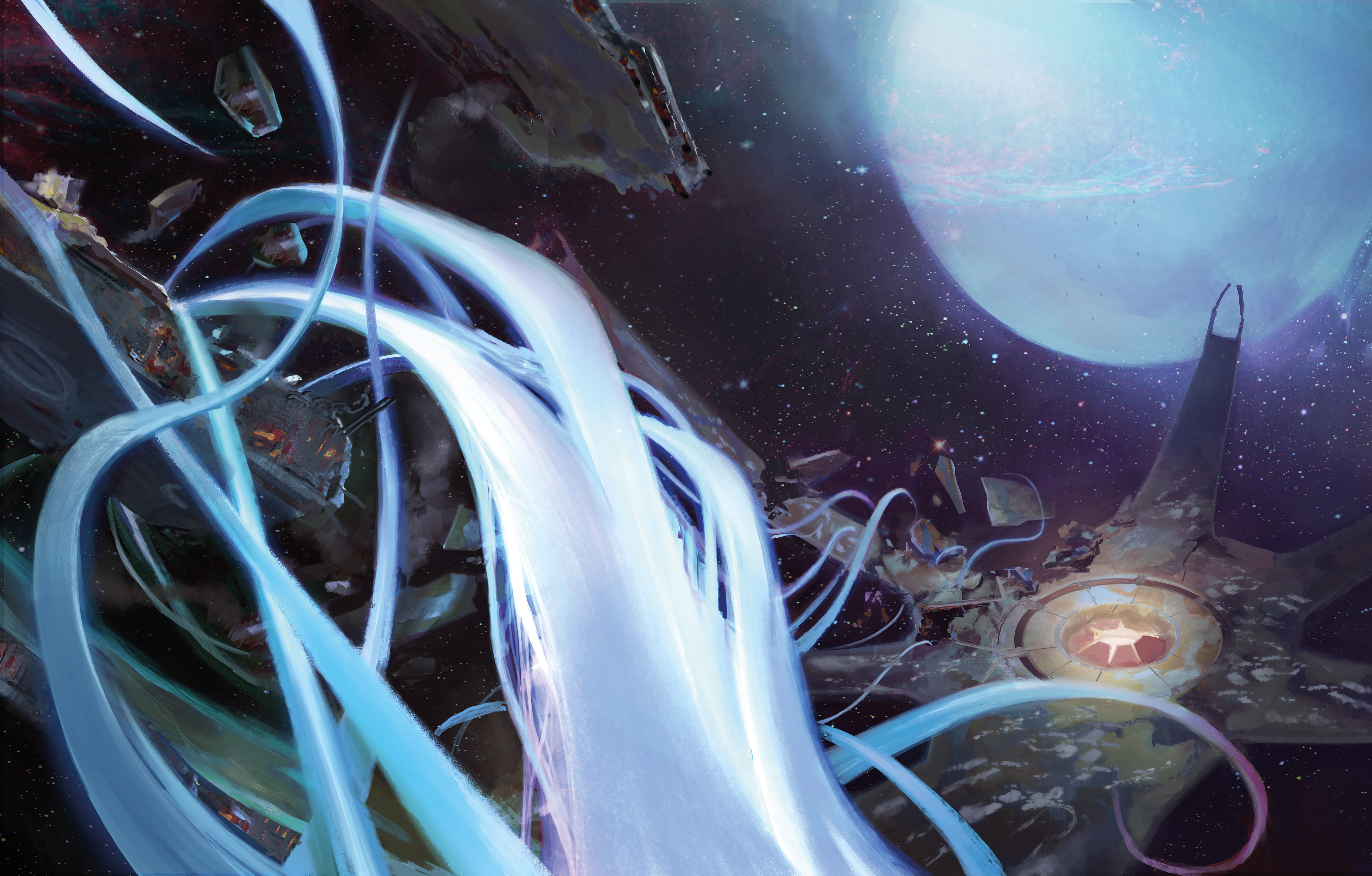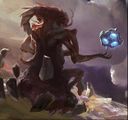User:Postmortem/WildlifeProject: Difference between revisions
From Halopedia, the Halo wiki
Postmortem (talk | contribs) mNo edit summary |
Postmortem (talk | contribs) m (→Earth) |
||
| Line 32: | Line 32: | ||
...And our civilization was mighty. But this came at a cost. Overpopulation was a serious concern as more and more people crowded into less and less land, concentrating resources in cities and sucking dry the natural world. Wars between great nations swept the land, ravaging all in their wake. As our species increasingly relied on and expanded its technology, the climate itself was changed by the engines of industry. Coastlines were altered by rising sea levels. Ecosystems died out. And then, as the artificially-intelligent minds we had built sought solutions to our problems, one came... in the form of the Shaw-Fujikawa Translight Engine. | ...And our civilization was mighty. But this came at a cost. Overpopulation was a serious concern as more and more people crowded into less and less land, concentrating resources in cities and sucking dry the natural world. Wars between great nations swept the land, ravaging all in their wake. As our species increasingly relied on and expanded its technology, the climate itself was changed by the engines of industry. Coastlines were altered by rising sea levels. Ecosystems died out. And then, as the artificially-intelligent minds we had built sought solutions to our problems, one came... in the form of the Shaw-Fujikawa Translight Engine. | ||
<gallery> | |||
File:H4-Earth.jpg | |||
File:Halo3 111898607 Medium-1-.jpg|Ecological outlook not so good in 2552 | |||
</gallery> | |||
====Climate and the Holocene Extinction==== | ====Climate and the Holocene Extinction==== | ||
| Line 48: | Line 53: | ||
<gallery> | <gallery> | ||
</gallery> | </gallery> | ||
Revision as of 22:53, November 14, 2024
The following is an overview for a hypothetical Wildlife of Halo field guide, akin to other published art/lore books from Microsoft such as Halo: Warfleet or the Halo Encyclopedia. Its aim is to showcase the art and science of the Halo universe.
This is a work-in-progress document that may not be complete as of this reading.
Introduction
This sandbox represents the proposed text and artwork for The Wildlife of Halo, as well as the general structure of the book and how it corresponds to the story of humanity's exploration of the galaxy within Halo lore. The intent is to tell the narrative of humanity's expansion from Earth throughout the Orion Arm from a scientific perspective, including the ecological mysteries that emerged on human colony worlds (foreshadowing later discoveries), the revelations brought about by the knowledge of Covenant space, and finally the mysteries of the Forerunners and their various installations.
The information presented here does not accord with Halopedia's standards for accurate lorekeeping, nor does it intend to. Instead of presenting only hard data from established sources, this document also includes elements of original expanded lore, as though the text here were to be published as a reference book for fans to pore over and learn more about the Halo universe from. Hopefully, the book will also awaken in the reader an interest in real-world ecology, prompting them to consider their own footprint within local ecosystems, as well as our species' impact on a global scale.
When reading the guide in this format, keep in mind that full-size images represent artwork that would appear at the start of a new "chapter" within the book, typically a two-page spread for maximum visual impact, introducing a new location, which subsequent pages explore in detail. Images presented as part of a gallery would--in the published book--be formatted according to the needs of the page and the text they accompany, but that design is not included here.
Work on this page began on October 18th, 2024. This is a work-in-progress document that may not be complete as of this reading.
Human Sphere
Prehistoric Earth
Emerging from prehistoric Africa, our species was one of many hominids that evolved on Earth. This period in our evolutionary history is a great mystery to scientists, with debate about what caused such a variety of hominid forms to diversify around this time, only to shortly thereafter be overtaken by a single dominant species. Homo sapiens began as a tribal species worshipping totemic animal spirits, but with an intense proclivity for exploration and adventure. This lust for the unknown led us to conquer the planet, spreading to every corner of the globe, speaking many languages, interpreting the universe through many religions, constructing great works of art. We conquered fire, tamed electricity, built great cities, learned the secrets of the universe...
Earth
...And our civilization was mighty. But this came at a cost. Overpopulation was a serious concern as more and more people crowded into less and less land, concentrating resources in cities and sucking dry the natural world. Wars between great nations swept the land, ravaging all in their wake. As our species increasingly relied on and expanded its technology, the climate itself was changed by the engines of industry. Coastlines were altered by rising sea levels. Ecosystems died out. And then, as the artificially-intelligent minds we had built sought solutions to our problems, one came... in the form of the Shaw-Fujikawa Translight Engine.
Climate and the Holocene Extinction
Rainforest Wars and famine
Glassing of Voi and loss of East African megafauna
New Phoenix Incident
FTL
Shaw-Fujikawa Translight Manifold
Our species was suddenly able to leave the claustrophobic confines of the Earth, to spread our wings and stretch to fill an infinite horizon.
Terraforming
Atmospheric processors, orbital mirror arrays, and the introduction of genetically engineered microorganisms can nudge a less-than-hospitable planet toward human sustainability over a period of decades or centuries, but they do not remake worlds from scratch.
Venus was a long-shot terraforming project whose failure was so colossal and complete that it continues to be a cautionary tale for initiatives seeking to transform marginal worlds for human habitation. There are no permanent habitats on the extraordinarily hostile surface, with derelict orbital platforms existing as solemn reminders.
Modification and hybridization of crops and animals for specific planetary environments was key to the success of almost every colony. The field has enjoyed significant growth since the Domus Diaspora. with each colony world providing a wealth of new species to study and new genetic sequences to decode.
The limited use of cloning for livestock management has been commonplace for centuries.
- Halo Encyclopedia (2022)
The field of exobiology flourished, studying not just the potential evolution of life in our solar system, but expanding to study the effects of new planetary bodies on terrestrial organisms that were essential parts of the terraforming and colonization process.
Mars
Venus
Europa and Xenobiology
Cryonics
Uses and applications for human transport, agricultural products and livestock.
Early Colonies
- Visual needed
Juneou - colonized 2330
- Visual needed
Titus - colonized 2355
Reach
But when we got to Epsilon Eridani II, we found something strange. The environment was vaguely familiar, like the same landscape interpreted by a different artist. Much of the flora and fauna of the planet--which came to be known as Reach--were incredibly similar to their Earth counterparts (albeit adapted for more rugged terrain and marginally higher gravity), and some species were even identical! Many plants common to the Pacific Northwest region of Earth were found in abundance on Reach, including Western hemlock and Douglas firs. But Reach also had its fair share of unique species, like the Gúta, Spadehorn, and Moa, all encountered early on in Reach's colonization by predominantly Hungarian settlers.
Although Reach would take decades for terraformers to tame, the wealth of data it brought to scientists meant millions of years worth of new information to gather. To speak nothing of its riches in astronomical and geological data, Reach had also solved for biologists the age-old Sample Size Problem: the wealth of data that we had to work with about the evolution of life in the universe totaled not one, but two... and what we learned completely rewrote evolutionary taxonomy. Xenobiology was no longer a theoretical field.
Xenobiologists were relieved to see that the native organisms of Reach could still be broadly classed according to traditional phylogeny: Reach indeed possessed plants, animals, fungi, and abundant microorganisms. The presence of near-identical terrestrial species posed a mystery that invited many theories, further compounded by genetic testing which confirmed that the Douglas fir of Reach was, in fact, the same Douglas fir of Earth. Many proponents of the panspermia theory claimed this was proof of exchanged material between star systems. Others claims the organisms must have been transported to Earth by previous visitors, and that this was proof of intelligent alien life that predated humanity. Others still claimed that the organisms indeed arose natively on Reach, independent of any exchange with Earth, and our understanding of genetics would need to be entirely rewritten.
Either way, going forward, xenobiologists knew that it was possible to find strange, alien phylums on new planets, as well as all-too-familiar species that seemed like they could have been brought straight from Earth, alongside species that were brought from Earth as part of the terraforming process. The broad terms which scientists agreed to use going forward were:
- Terrestrial: Native to Earth and brought as part of the colonization process--traditional examples include beasts of burden (like horses) and livestock (such as cattle, pigs, and chickens)
- Exo-organism: Species that were identical to Earth-native species, but appeared to be part of the natural evolutionary history of the planet (or transplanted so long ago as to be part of the evolutionary history). Encompasses exoflora and exofauna.
- Xeno-organism: Completely new taxonomy with few analogues to terrestrial life. Encompasses xenoflora and xenofauna.
Within these the general phylogeny of animal, plant, fungi, or micro-organism still held, though part of a different tree of life from that studied for centuries on Earth.
Exo-organisms
Exoflora
- Visual needed
Douglas fir
Exofauna
- Visual needed
Wolf
Xeno-organisms
Xenofauna
Spadehorn
Moa
- VTHU
Gúta
Xenofauna
- Visual needed
Reavian Redcrest
- Visual needed
Cherot
- Visual needed
Guper
- Visual needed
Kropey
Eridani System
But Eridani II was not the only candidate in the Eridani System. Once a foothold was established on Reach, the other habitable planets in the system were scouted.
Beta Gabriel
Water world eventually valued as an in-system planetary nature preserve, serving as a popular holiday destination for the wealthy, but also a paradise for scientists of all types. It was on Beta Gabriel that the Paelosur and Nightmare Eel were discovered.
Xenofauna
- Visual needed
Krill-like creature
- Visual needed
Three-meter crustacean
Tribute
Circumstance
Inner Colonies
Sigma Octanus IV
Oban
Xeno-organisms
Xenoflora
Alluvion
Alluvion established the borderline with the Outer Colonies. It was on Alluvion that scientists discovered the same xeno-organisms they had discovered on Beta Gabriel, in the same system as Reach. There was no explanation for the presence of these creatures on planets separated by light years, unless they were evidence that previous visitors had transported them from world to world. It shed a new light on the presence of Earth-analogous exo-organisms on extrasolar worlds, and reaffirmed for science that it was not just the Earth environment that had been distributed through some means across multiple planets.
Xenofauna
Outer Colonies
Cascade
New Carthage
- Visual needed
Xenofauna - Great Red Shark
Arcadia
- Visual needed
Xenofauna - Drymander
Carrow
Draco III
- Visual needed
Xenofauna - Bat-shaped leech
- Visual needed
Xenofauna - Ice shark
- Visual needed
Xenofauna - Naeori
Terceira
- Visual needed
Xenofauna - Giant Crocodile
Dwarka
- Visual needed
Colonized 2460
- Visual needed
Xenofauna - Dwarkan Ghost Squirrel
- Visual needed
Xenofauna - Dwarkan Centipede
- Visual needed
Xenofauna - Dwarkan Beetles
Sedra
- Visual needed
Xenoflora - Sedran Red Fruit
Concord
- Visual needed
Exoflora - Juniper
- Visual needed
Exoflora - Sage
Partition
Draetheus V
Erebus VII
Circinius IV
Pacific Northwest Planet
Exo-organisms
Exoflora
Exofauna
Xeno-organisms
Xenofauna
Onyx
Exo-organisms
Exoflora
Harvest
Terrestrial organisms
- Visual needed
Starlings
- Visual needed
Bats
Exo-organisms
Exofauna
Xeno-organisms
Xenofauna
Glasslands
Ecological Catastrophe
The aliens had rained monsoons of hot plasma down on hundreds of worlds, burning soil and melting bedrock, boiling oceans and filling the air with superheated vapor. Any creature that had escaped instant incineration had suffocated on superheated smoke, or seared away its feet. Fleeing over molten ground, or emerged from hiding to eventually starve while wandering barren expanses of ash-impregnated lechatelierite.
The glasslands still showed orange because lechatelierite cooled from the top down, its surface solidifying into a vitreous blanket that kept heat from radiating into the air. The ground beneath could stay molten for a year, and remain hot to the touch for a decade. And the beach existed because much of the liquid that had been vaporized during the Covenant’s plasma bombardment had not yet returned to the oceans. Most of the planet’s water continued to hang in the atmosphere in vast banks of fog and clouds, or to lie trapped on the glass in giant lakes and ash bogs.
- Halo: Shadows of Reach
Crows have survived on glassed planets.
Covenant Sphere
Sanghelios
Xeno-organisms
Xenoflora
- Visual needed
G'lul'g Tree
- Visual needed
Irukan
- Visual needed
Kafel
Xenofauna
- Visual needed
Doarmir
- Visual needed
Electric Kesh
- Visual needed
Keifra
- Visual needed
Nishum
- Visual needed
Quillick
- Visual needed
Snap-Tails
- Visual needed
Thremaleon
- Visual needed
Velithra
Sangheili Colonies
Janjur Qom
Te
Palamok
Eayn
Balaho
Xeno-organisms
Xenofauna
- VTHU
Mud Wasp
- Visual needed
Shade Crab
- Visual needed
Zap-Jelly
Doisac
Pre-Immolation
Great Immolation
Nuclear Wasteland
Xeno-organisms
Xenoflora
Xenofauna
- Visual needed
Degaeorth
- Visual needed
Grattle-bah Shrew
- Visual needed
Kateukal
Razing of Oth Sonin
Destruction and Mass Extinction
Forerunner Sphere
Alpha Halo - Installation 04
Exo-organisms
Exoflora
- Spruce
Exofauna
- Peafowl
Xeno-organisms
Xenofauna
Thorn Beast
Destruction
Replacements
- Installation 08
- Installation 09
Delta Halo - Installation 05
Xeno-organisms
Xenofauna
Quadwing
The Ark - Installation 00
Xeno-organisms
Xenofauna
Sky Leviathan
Tusk Beast
Blind Wolf
Sarcophagus - Shield World 0006
Trove - Shield World 0459
Exo-organisms
Exofauna
Xeno-organisms
Xenofauna
Destruction
Requiem - Shield World 0001
Xeno-organisms
Xenoflora
Xenofauna
Destruction
Genesis - Shield World 0111
Xeno-organisms
Xenoflora
Xenofauna
Zeta Halo - Installation 07
Exo-organisms
Exofauna
Brontothere
Very similar to species of prehistoric fauna from Earth.
Xeno-organisms
Xenofauna
The Flood
The ultimate xeno-organism. An end to biodiversity everywhere.
Feral
Flood Super Cell
Biomass
Infection Forms
Pod Infector
Combat Forms
Non-sapient
Human
Sangheili
Unggoy
Augmented Human
Dispersal Forms
Blister
Carrier
Launcher
Seeders
Bomber
Coordinated
Compound Intelligences
Proto-Gravemind
Command Forms
Juggernaut
Abomination
Blightstalker
Pure Forms
Stalker
Tank
Infestor
Spawner
Hellion
Gaunt
